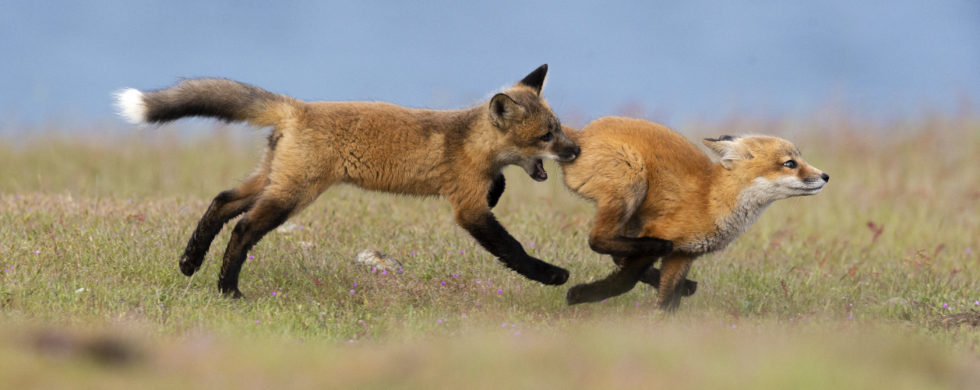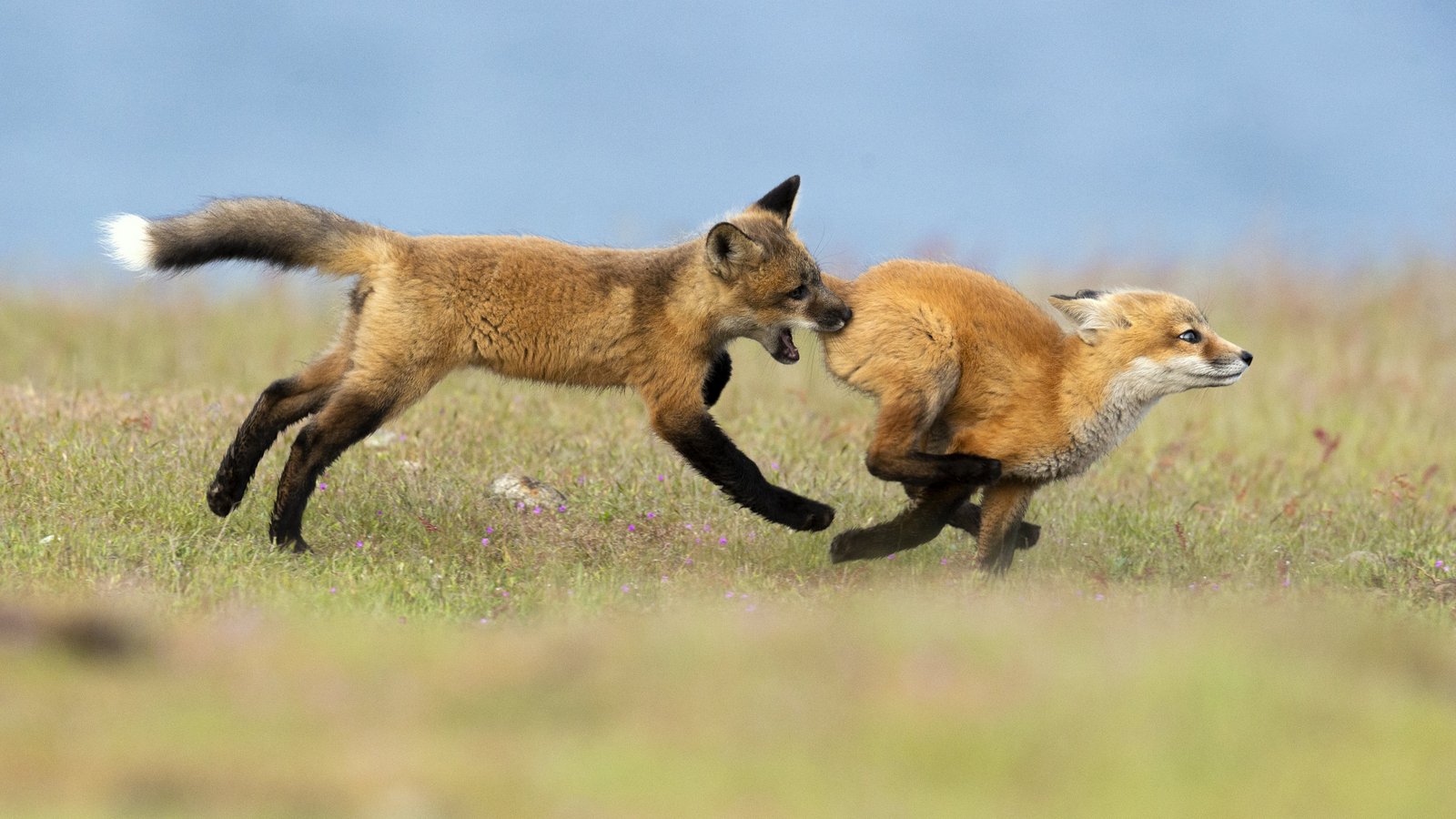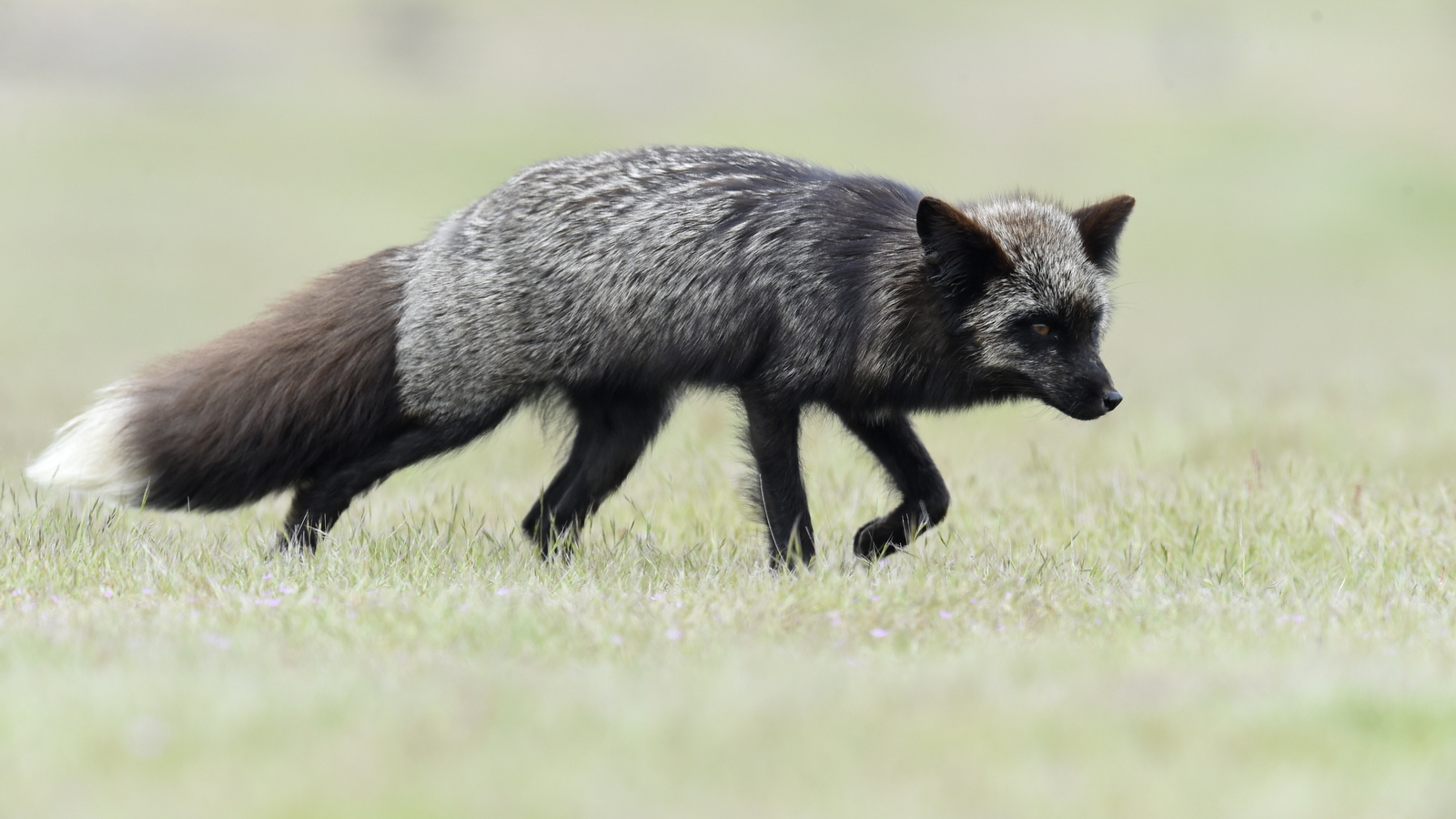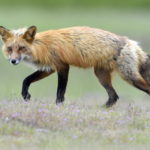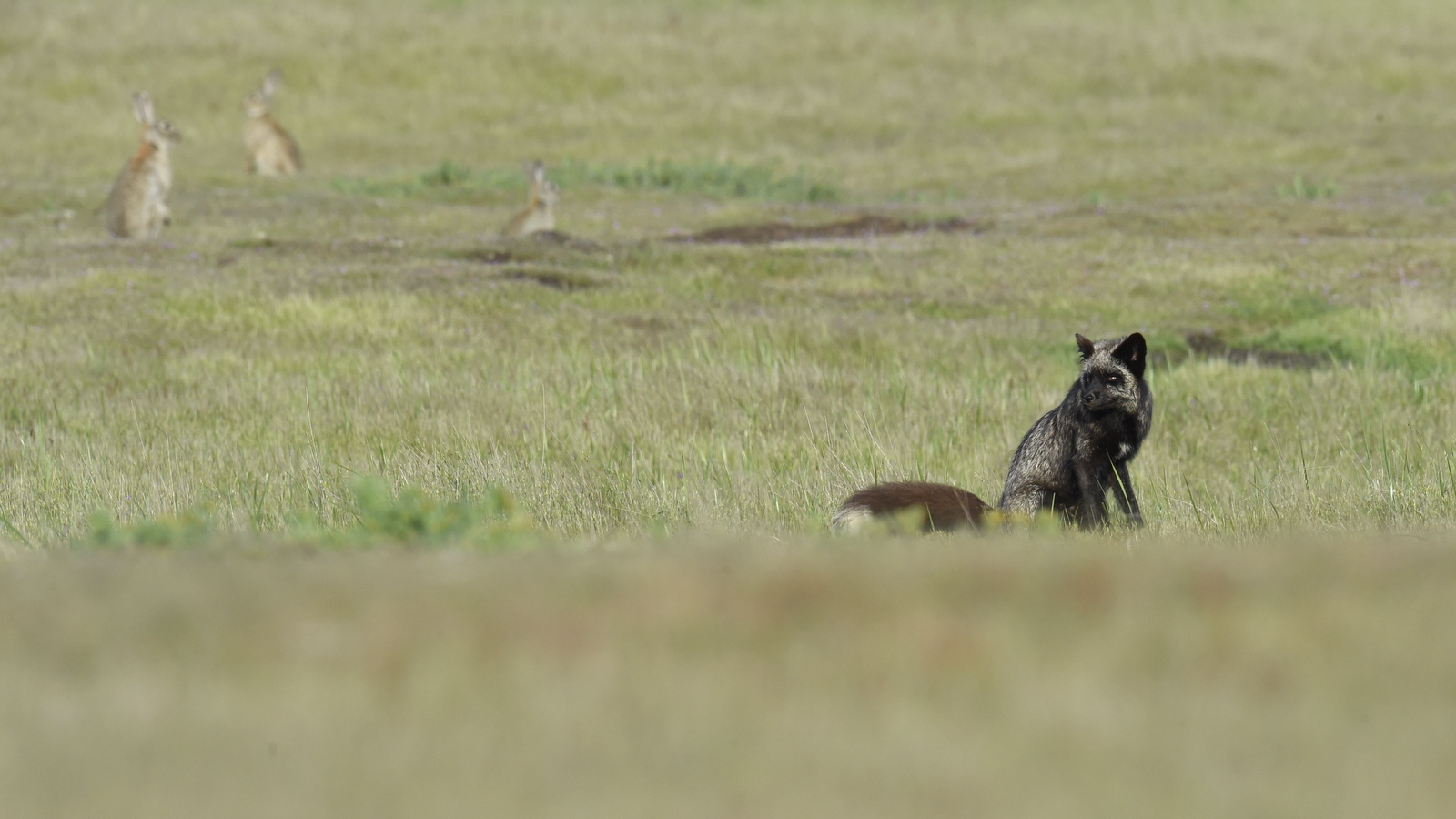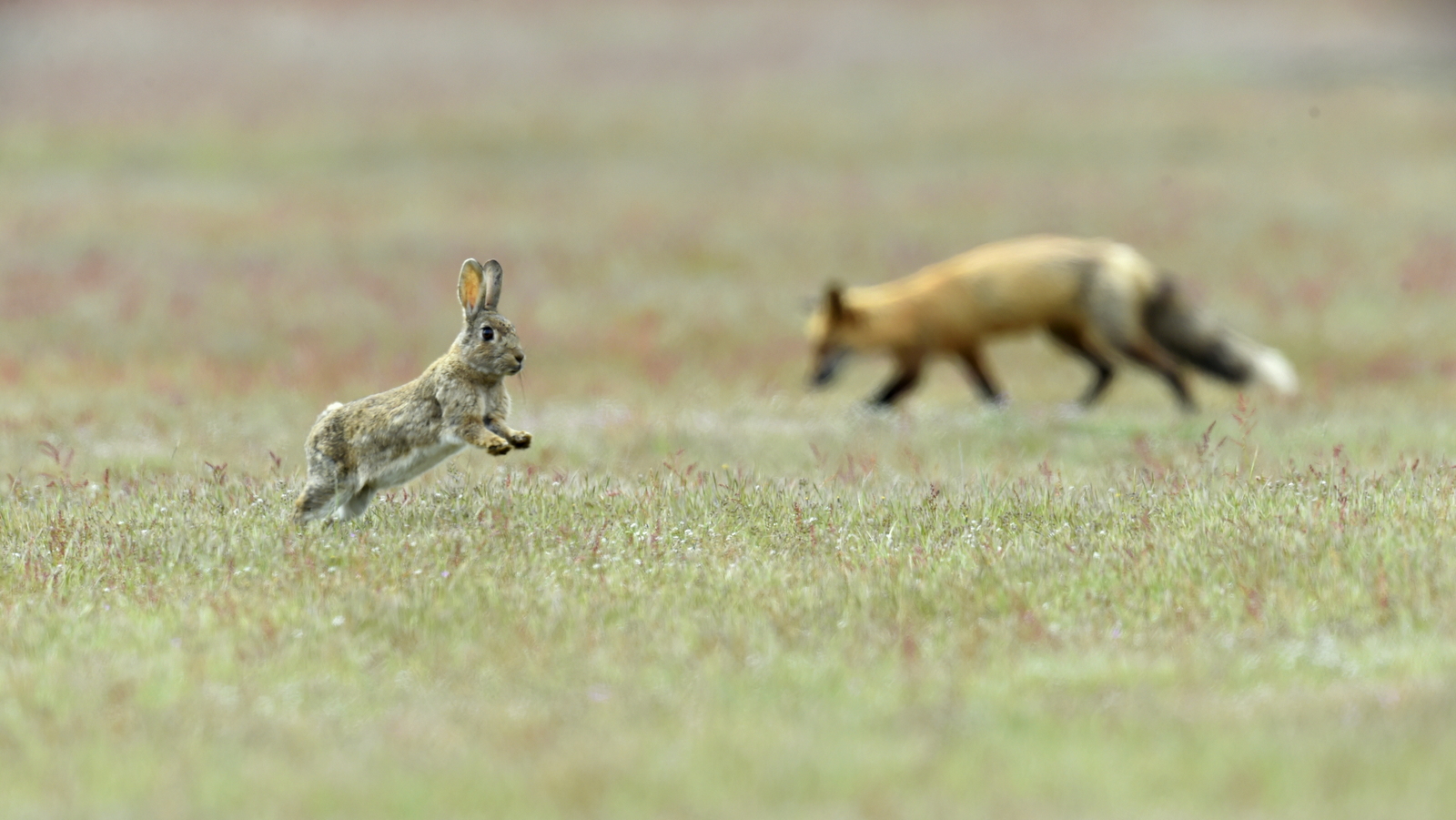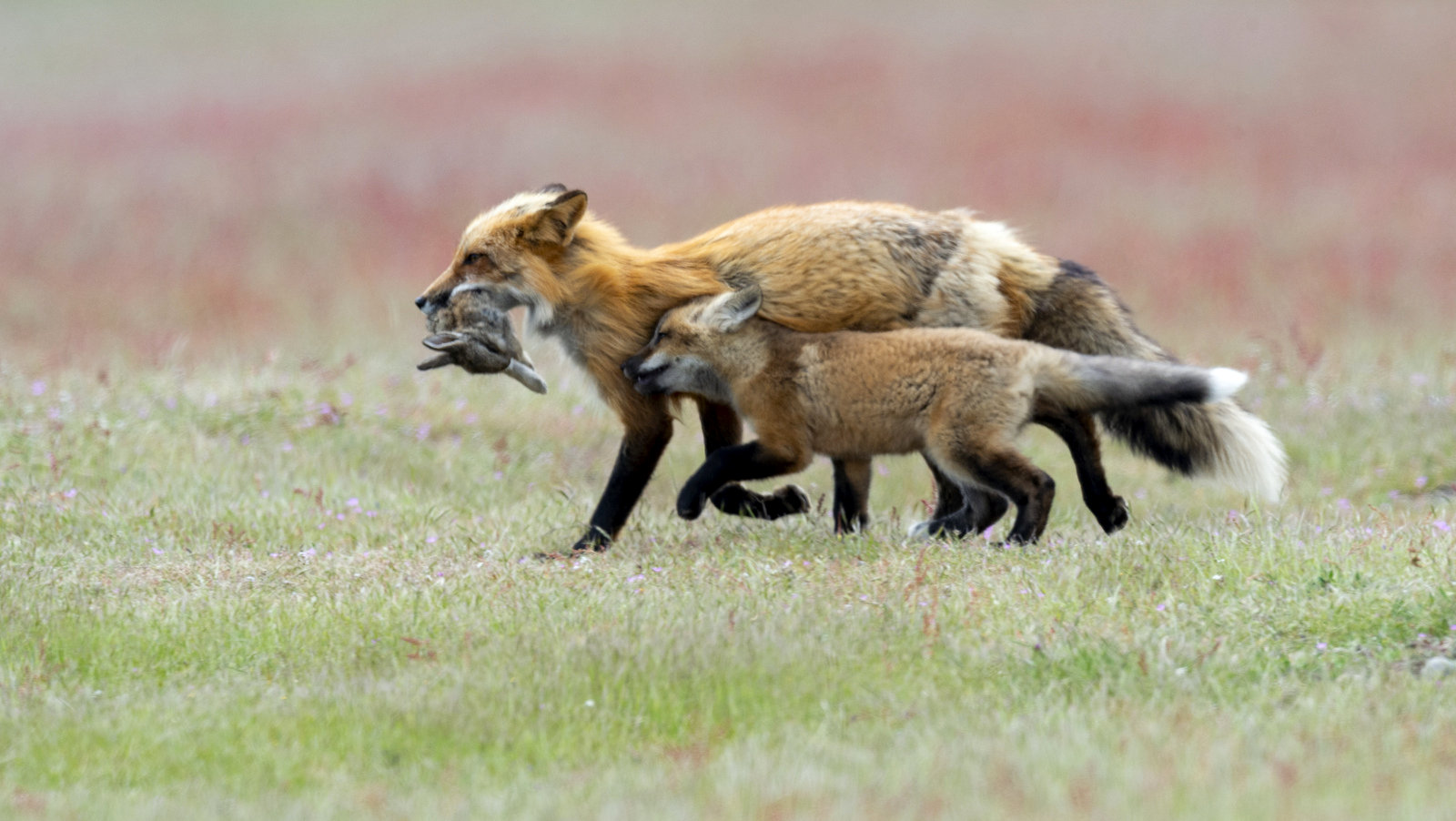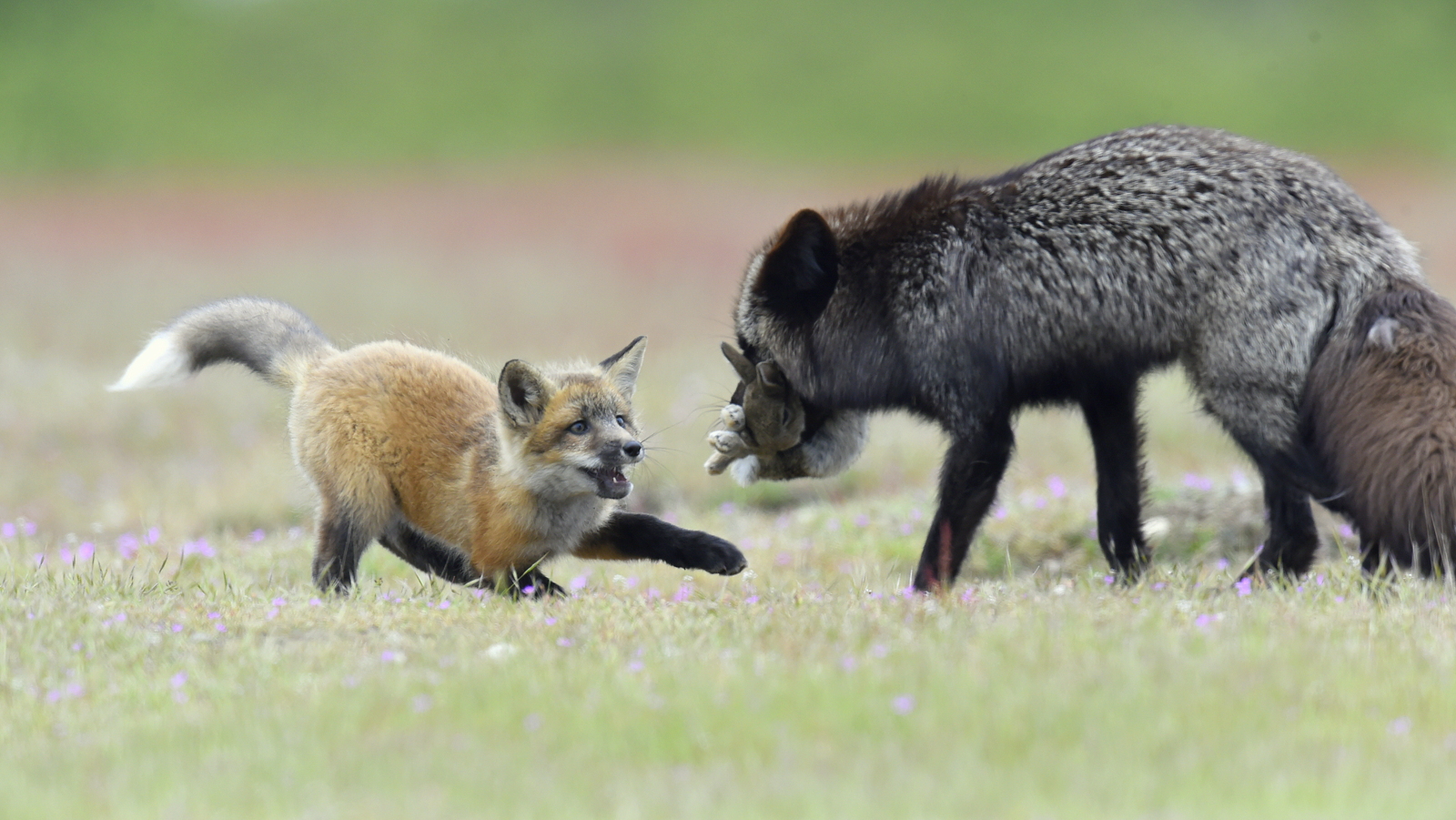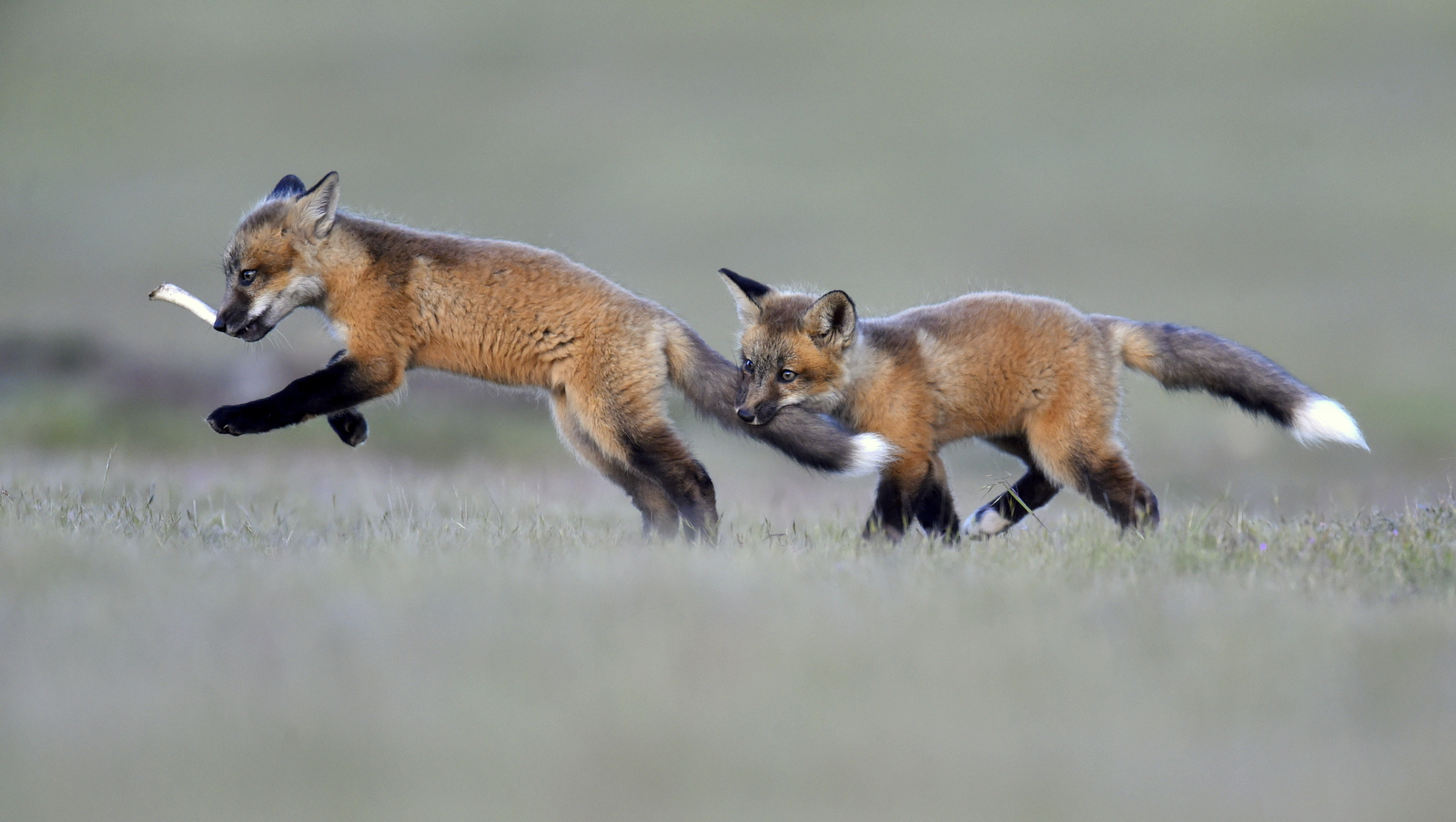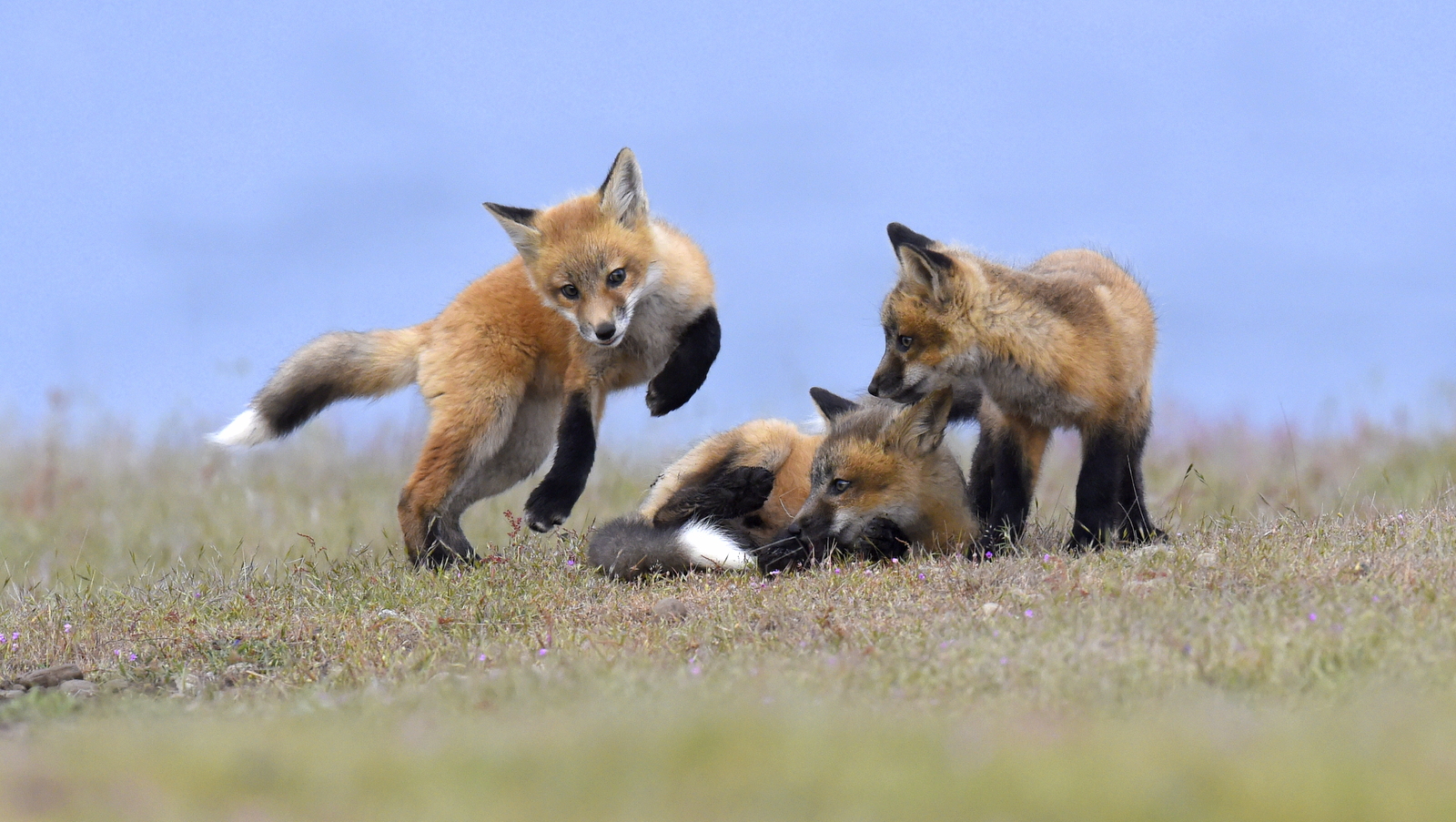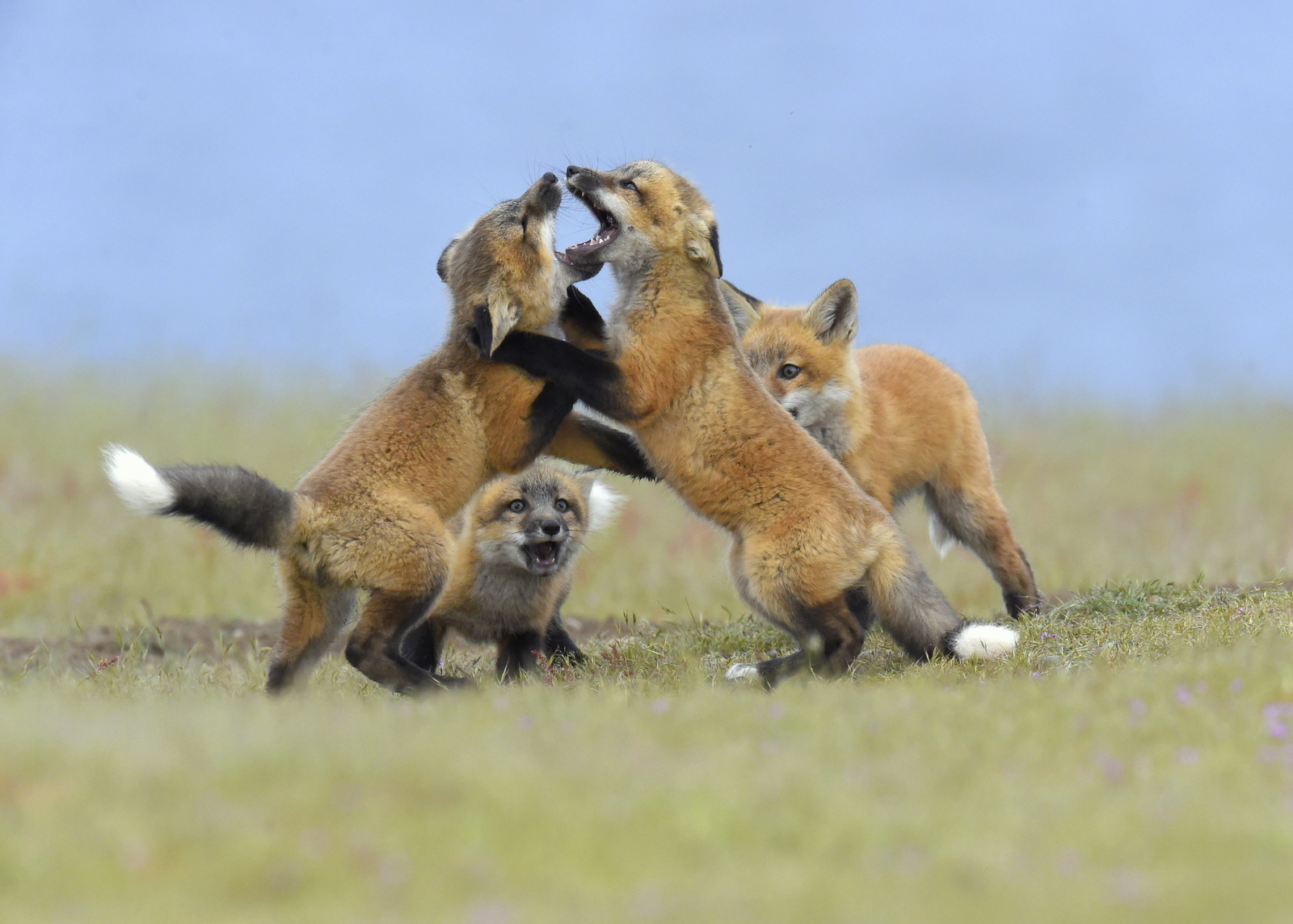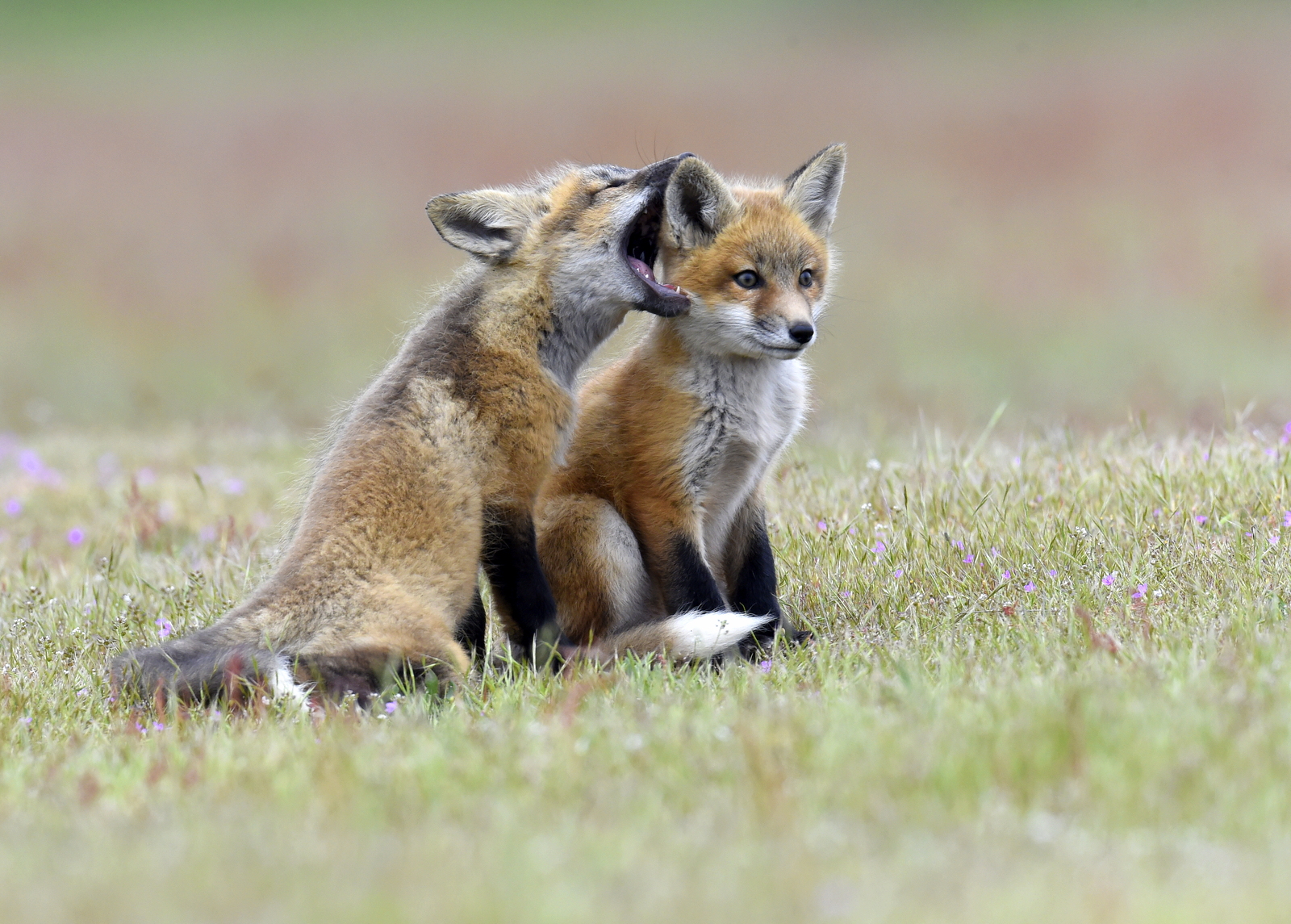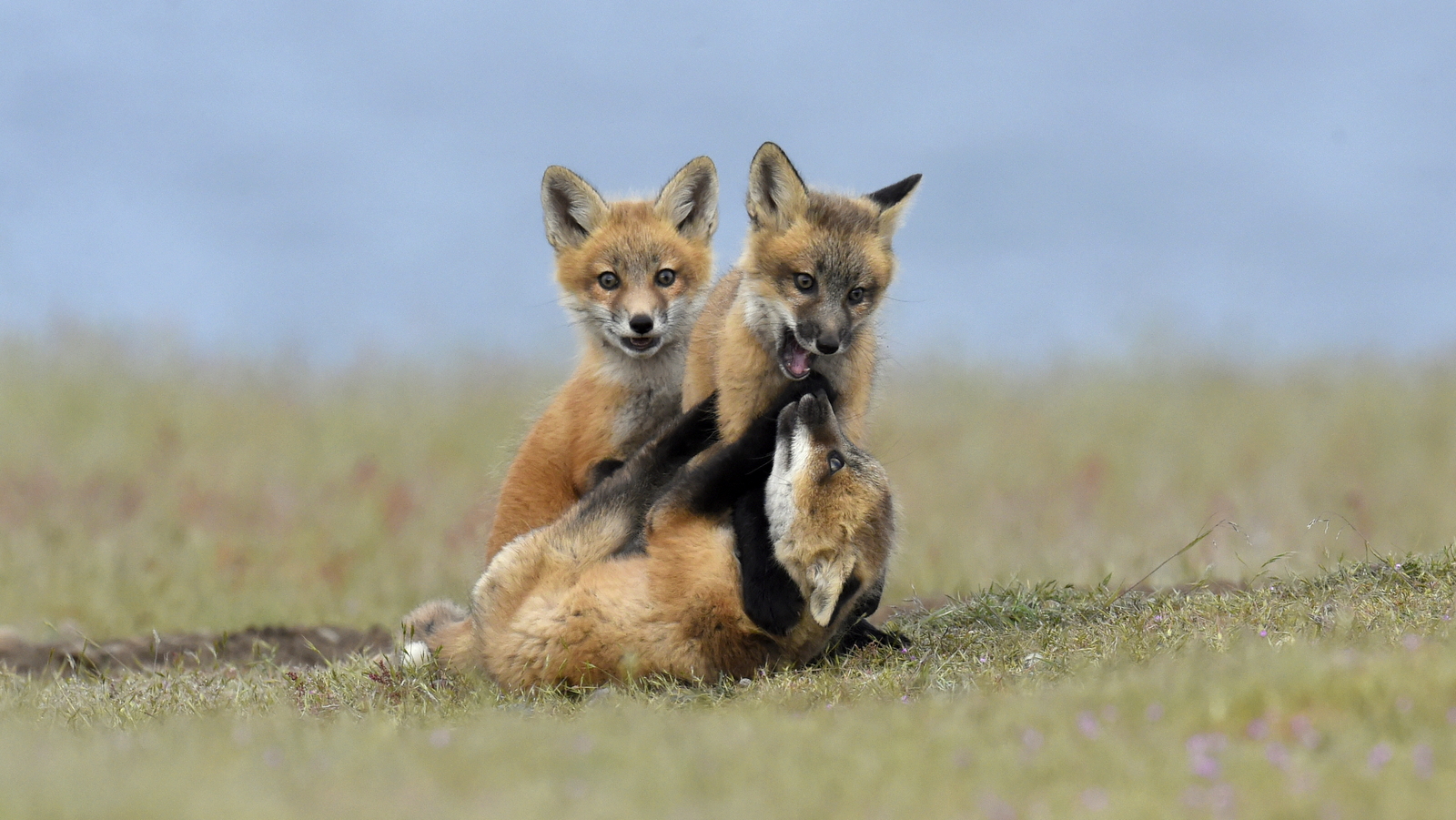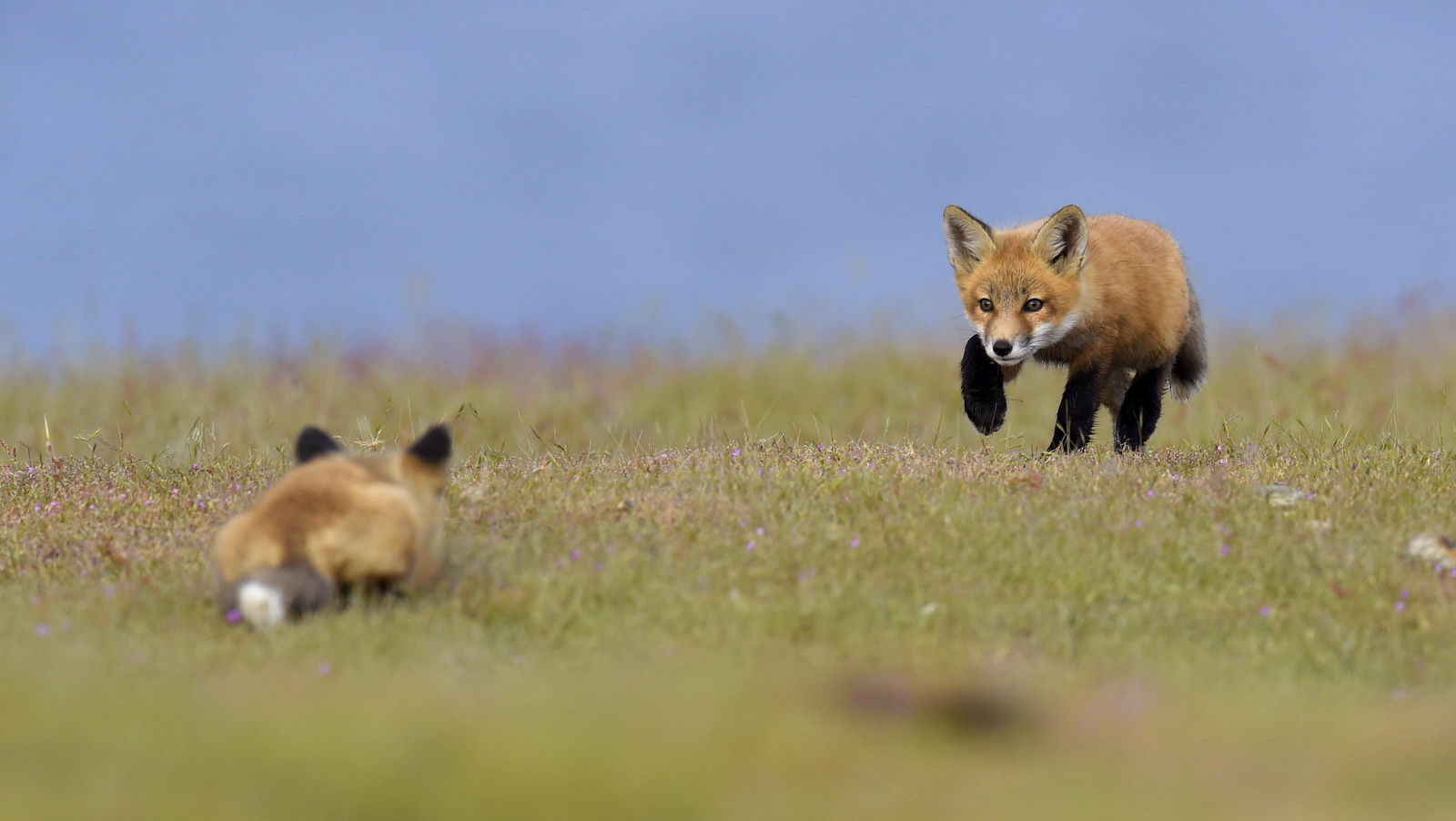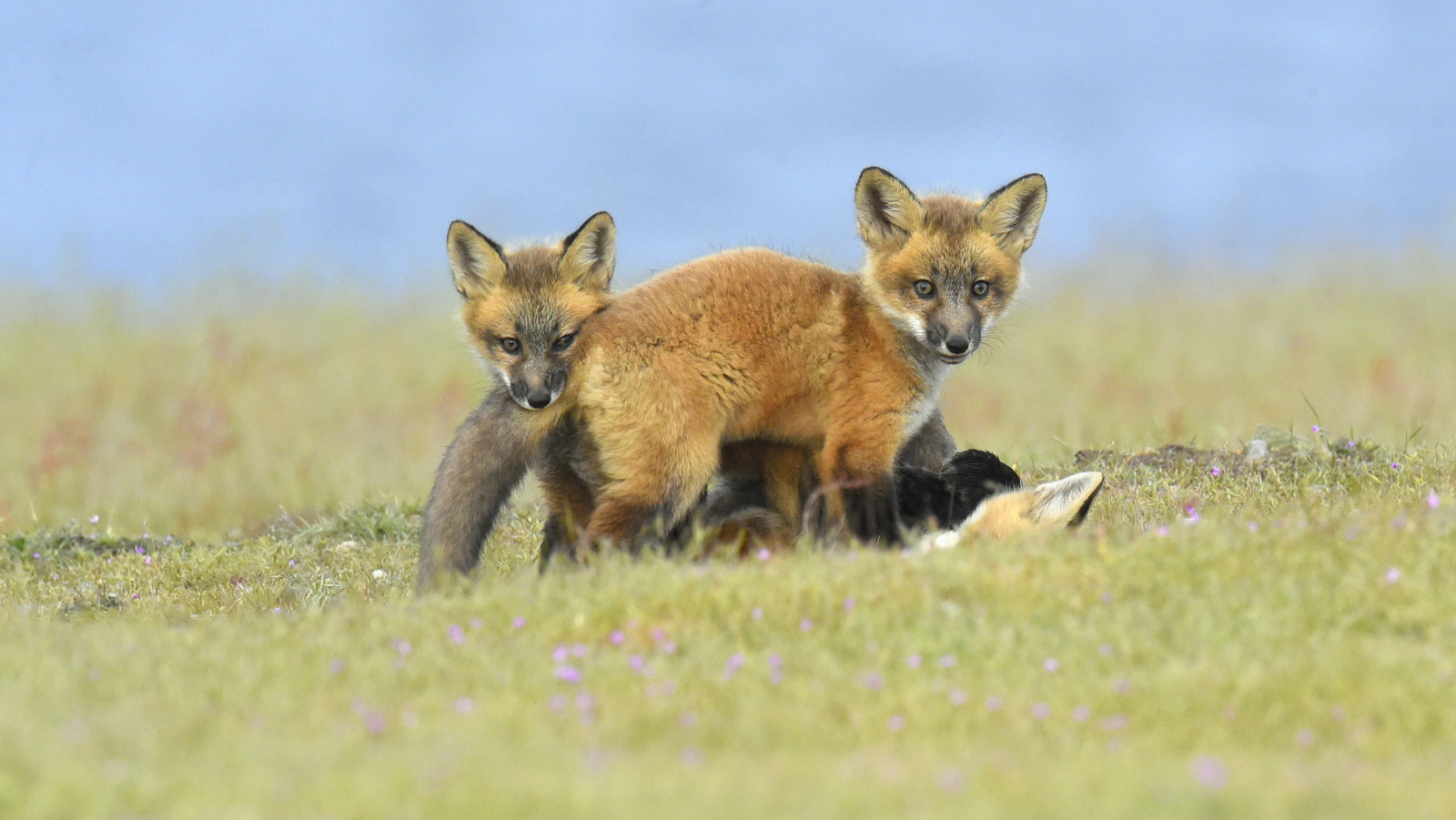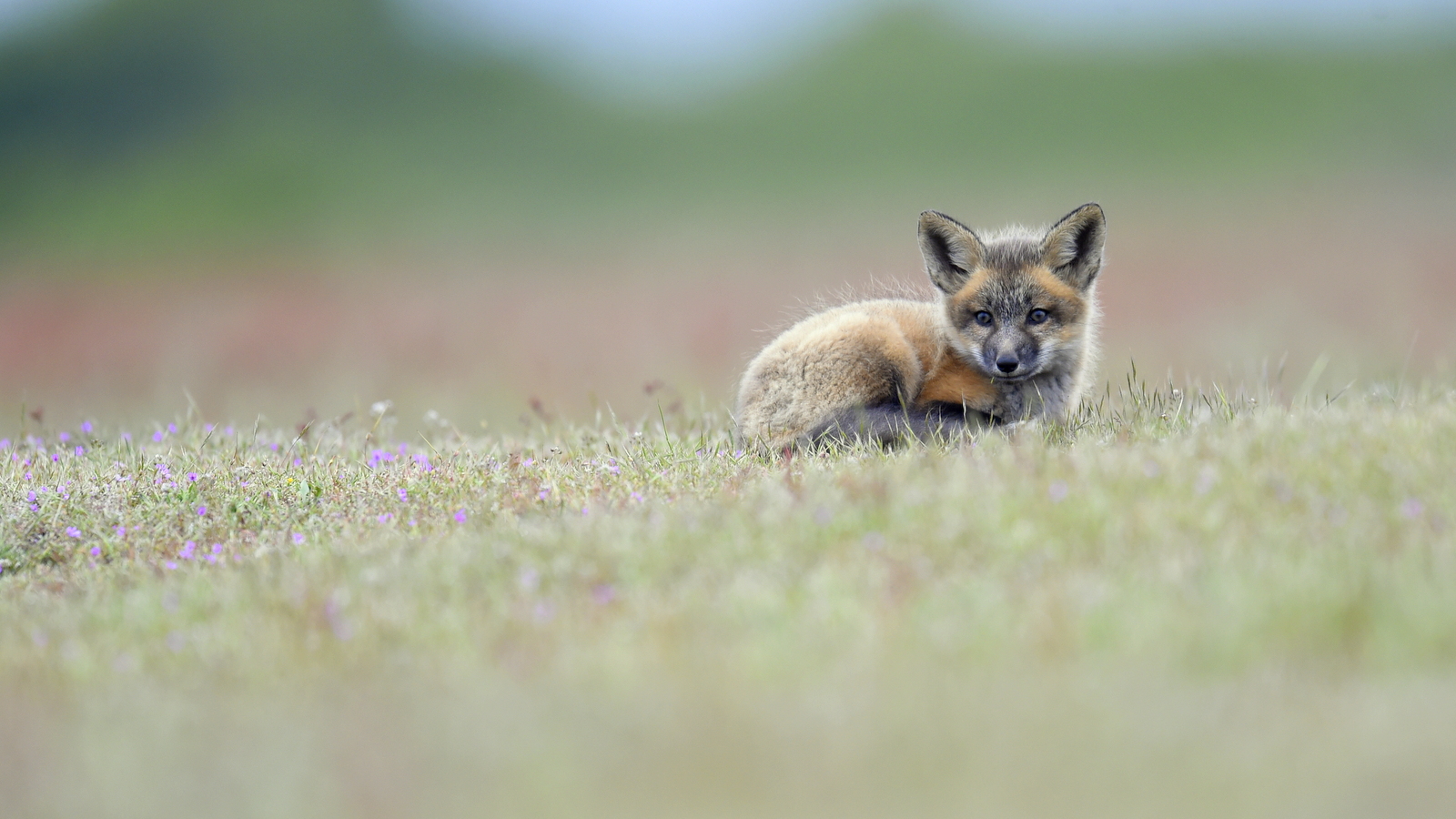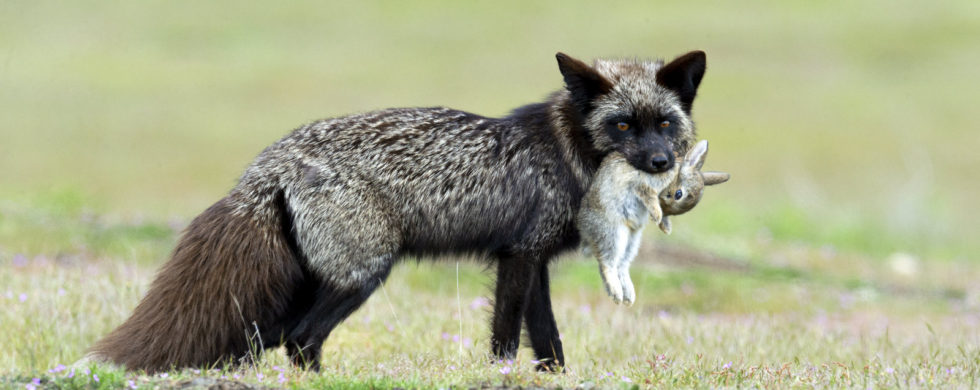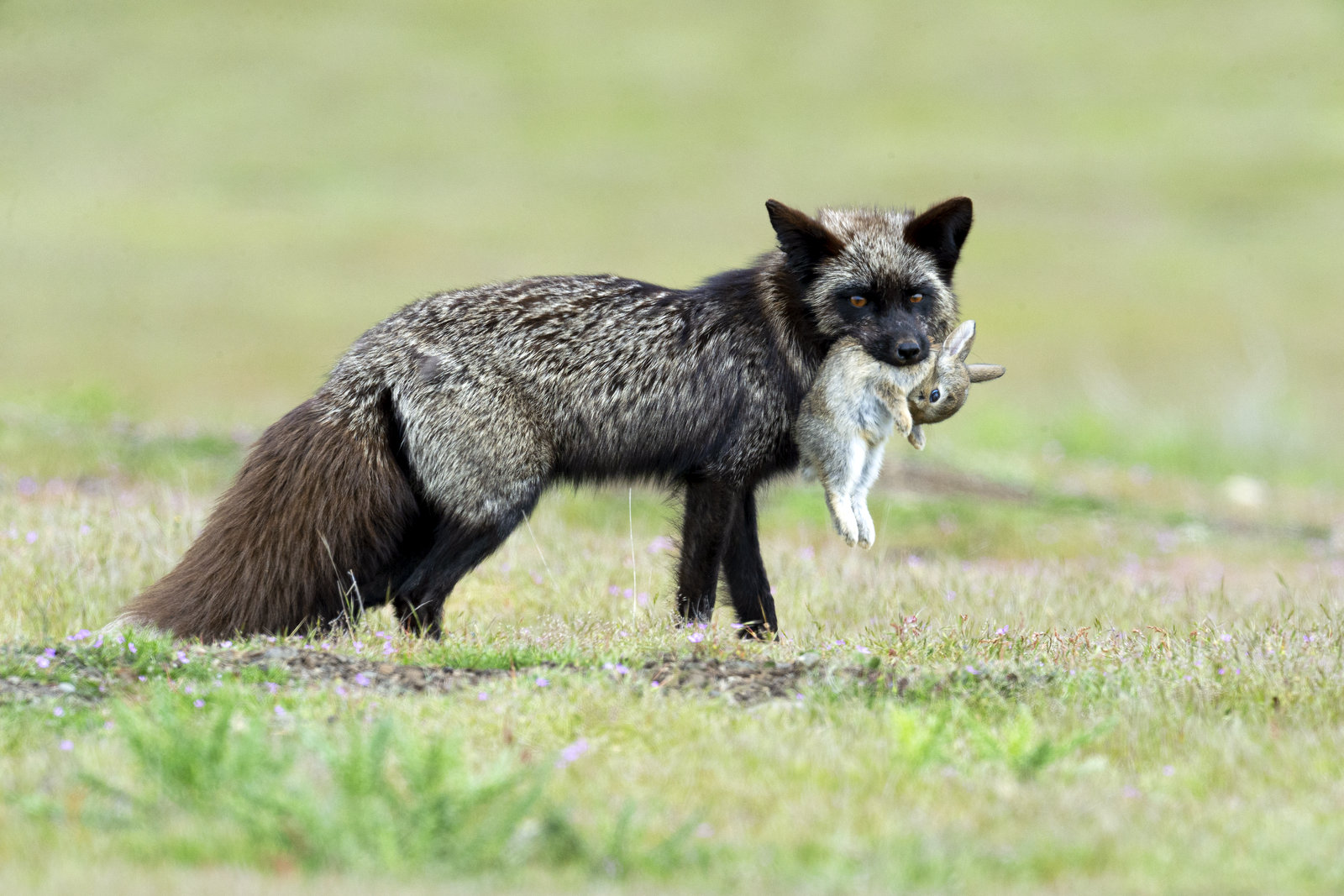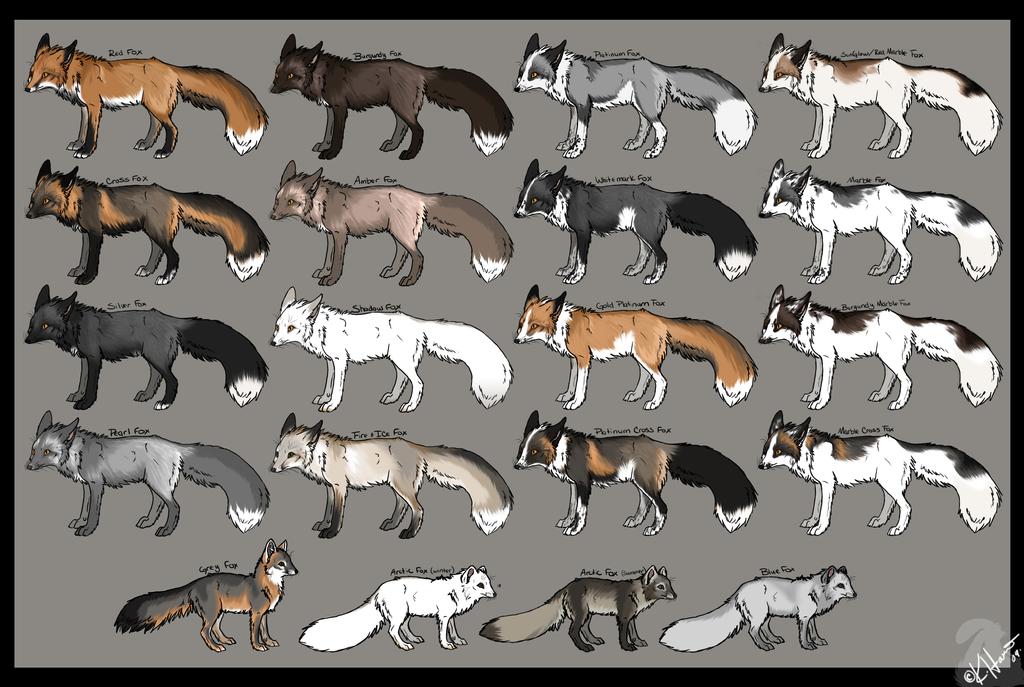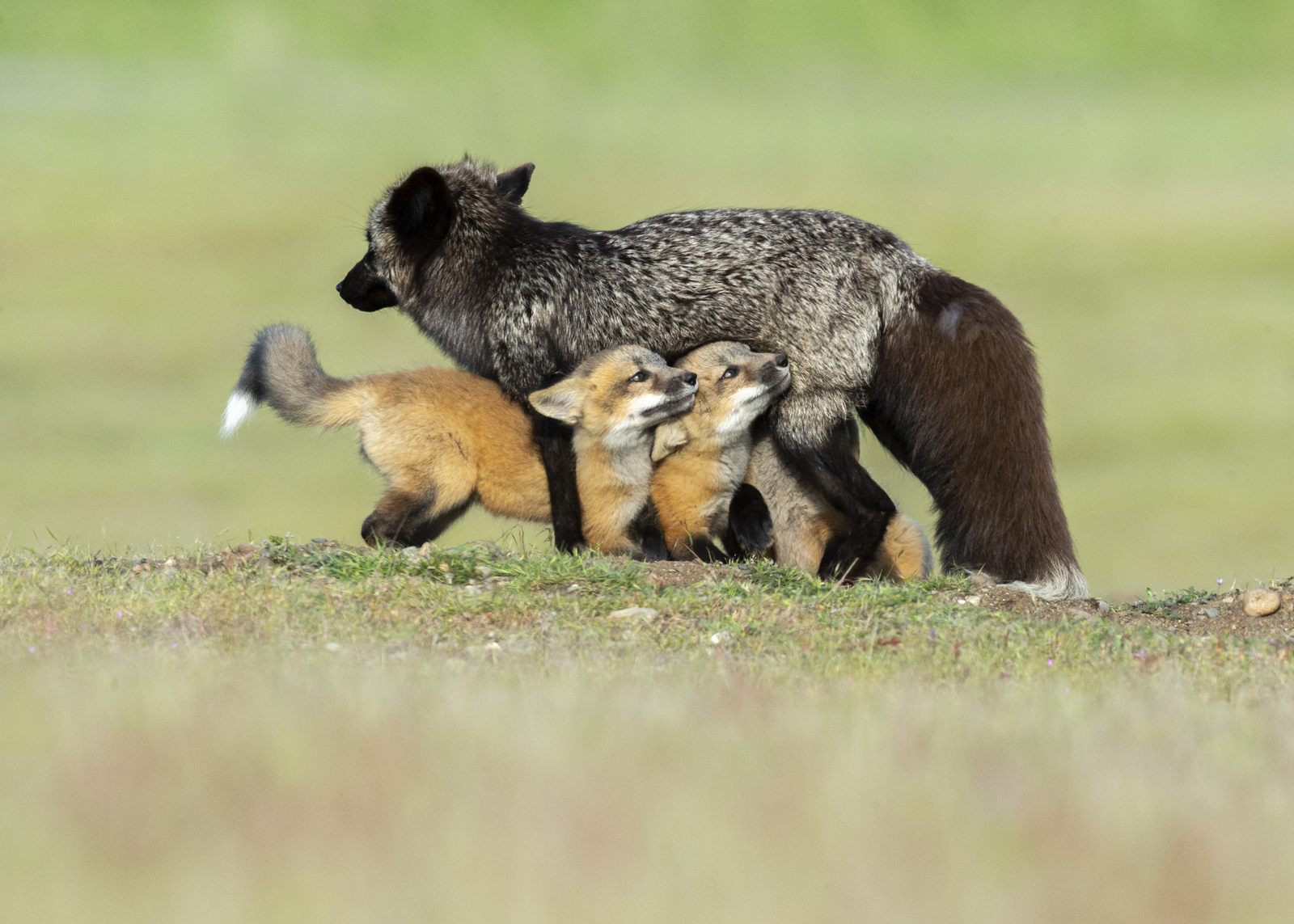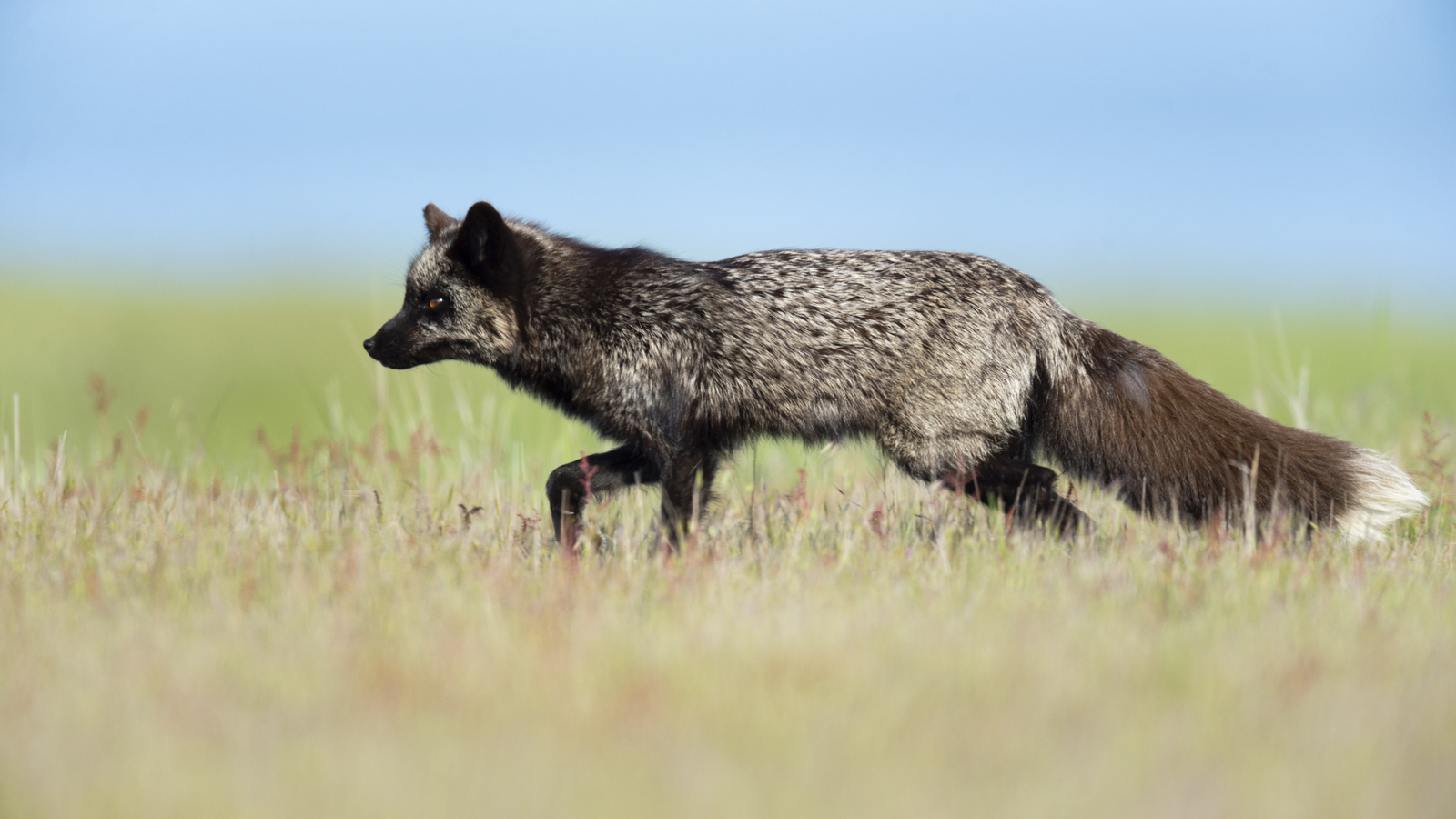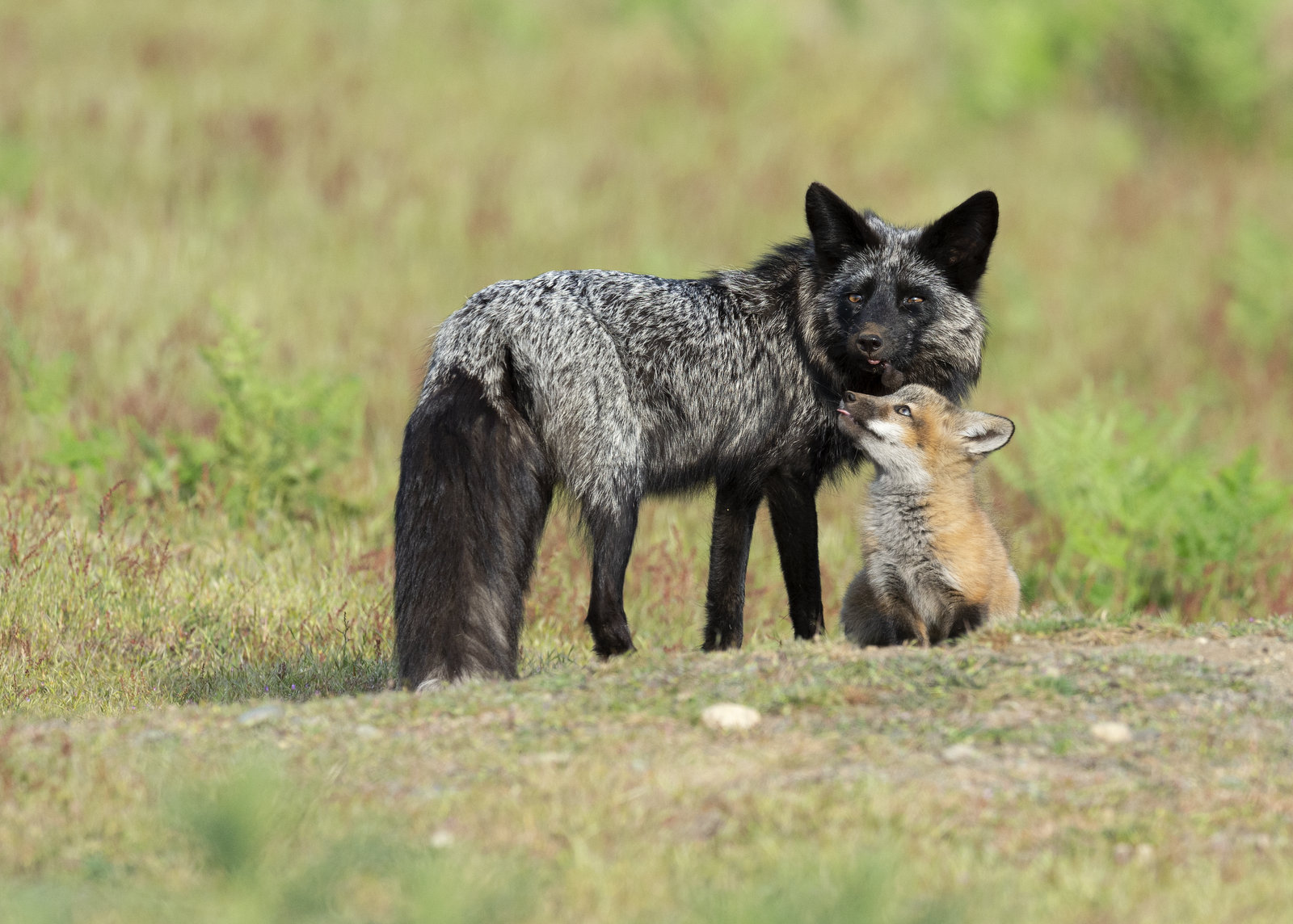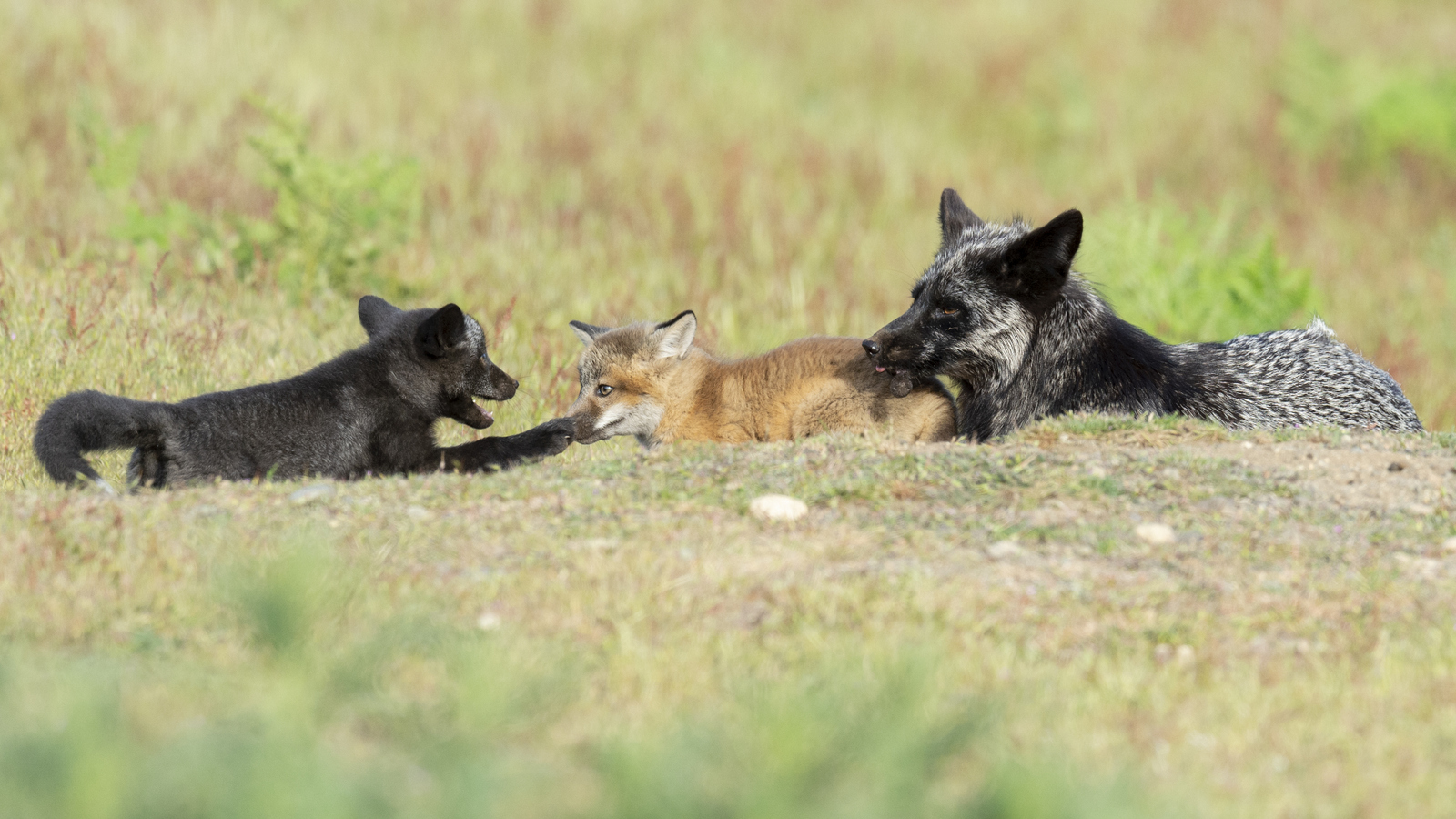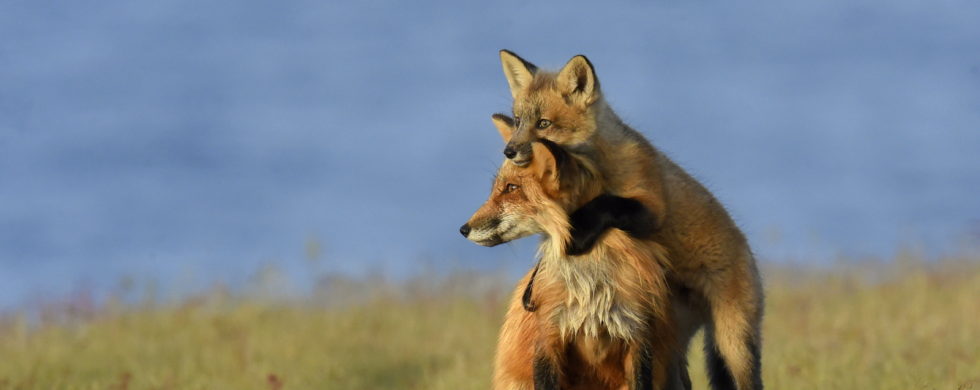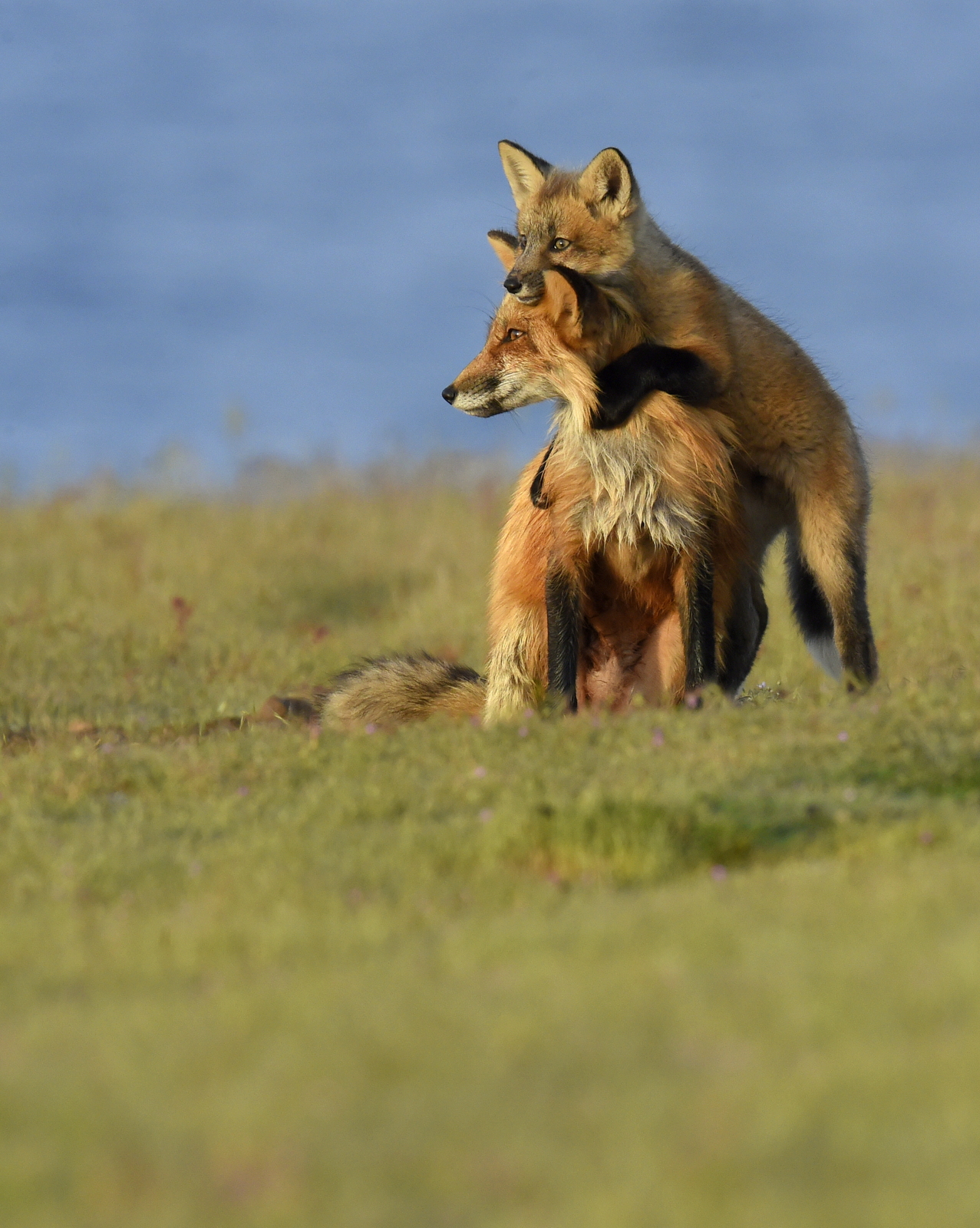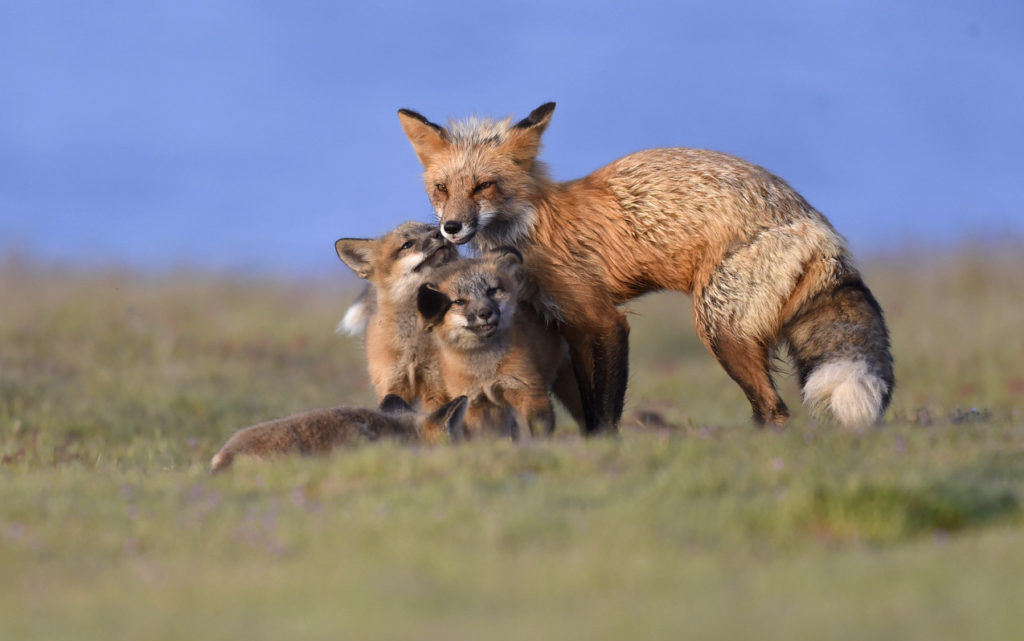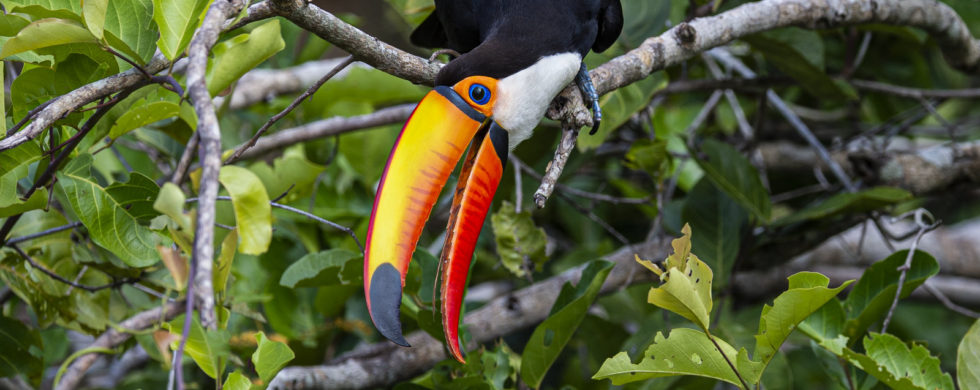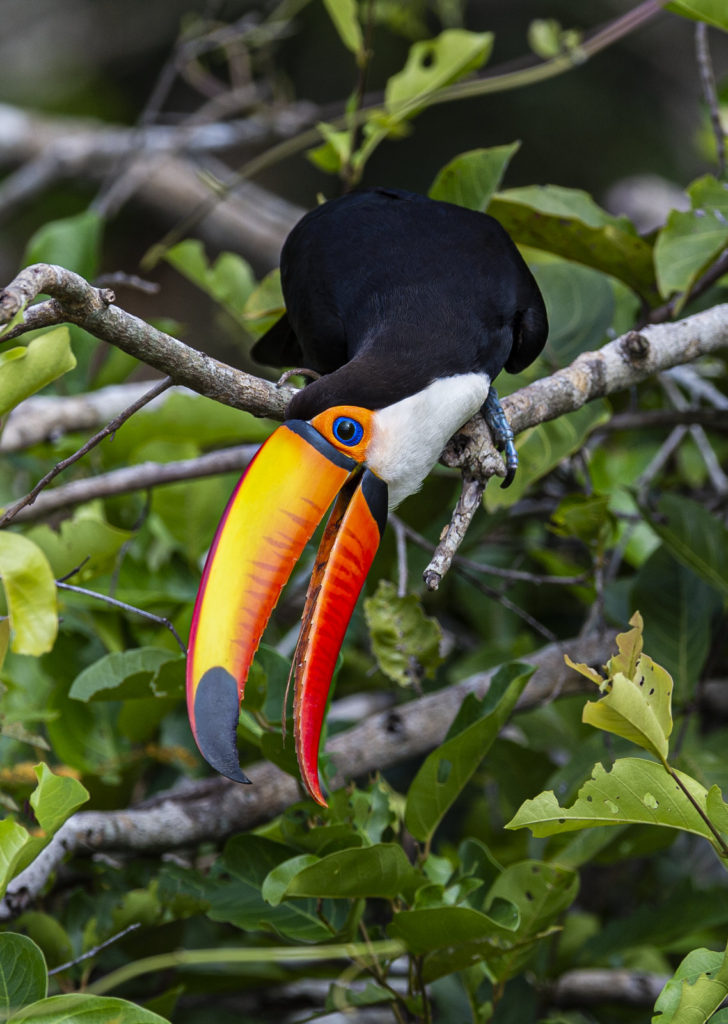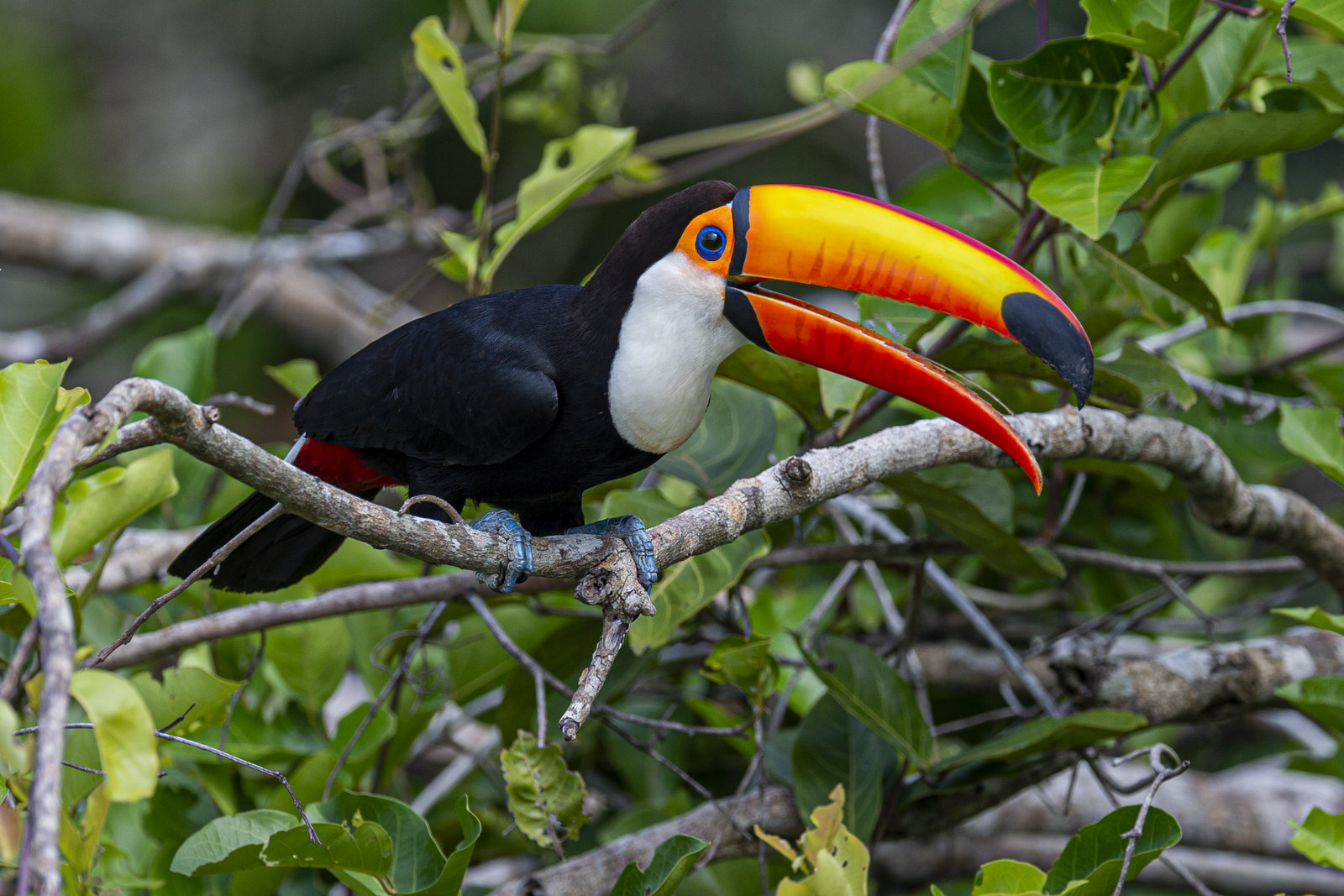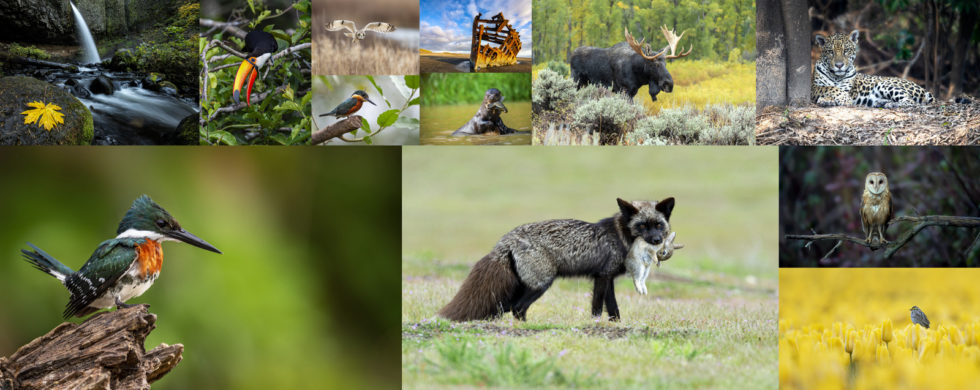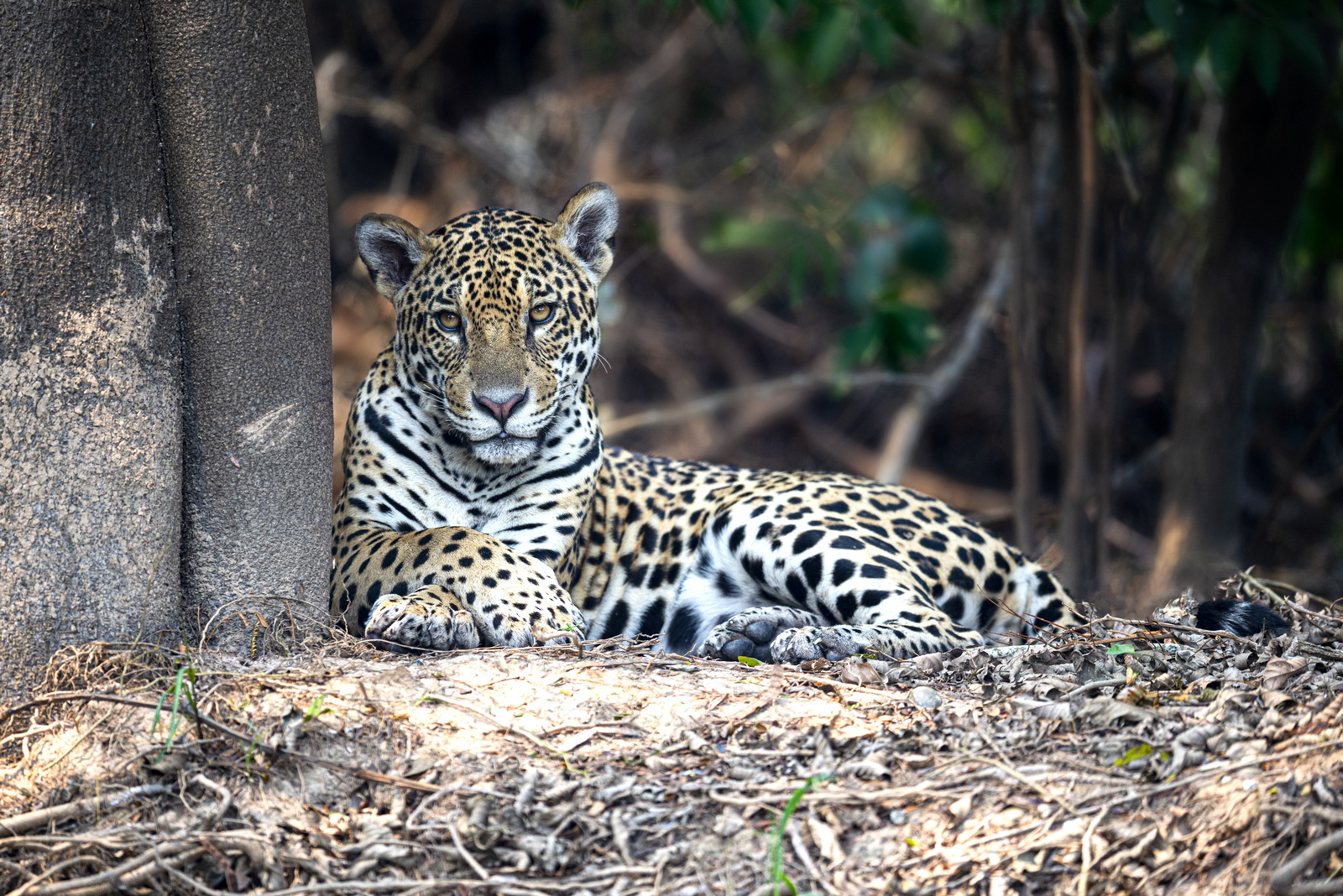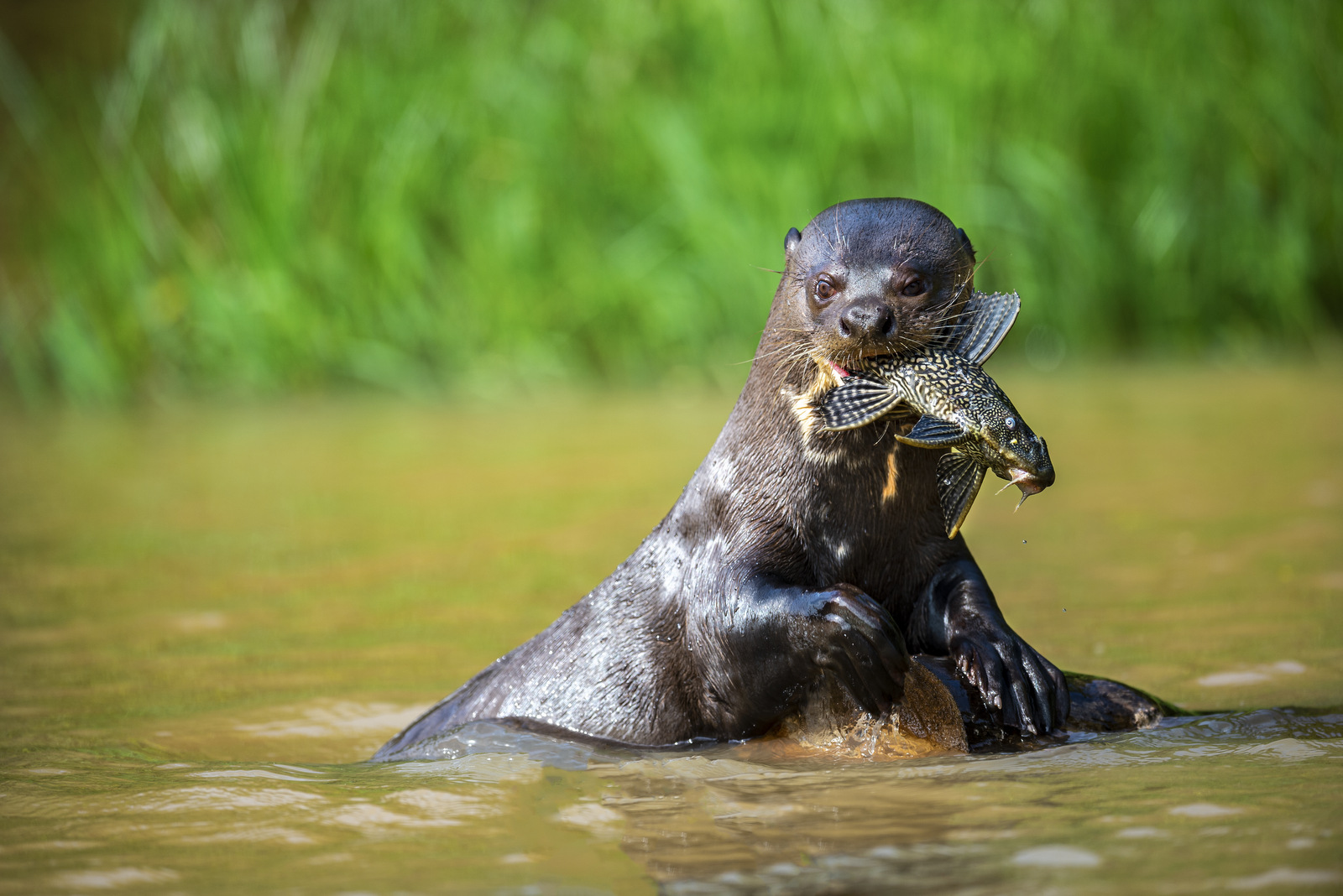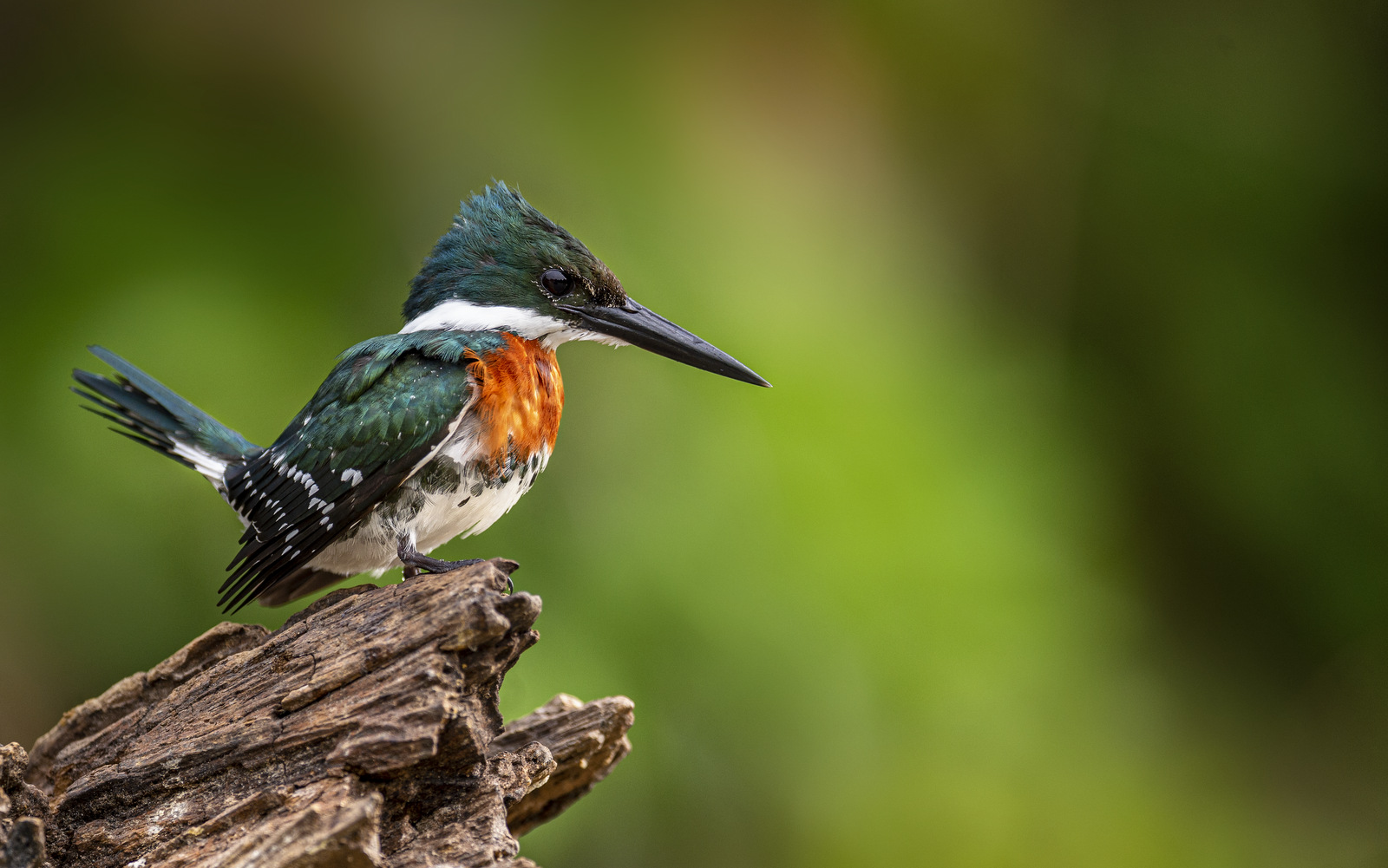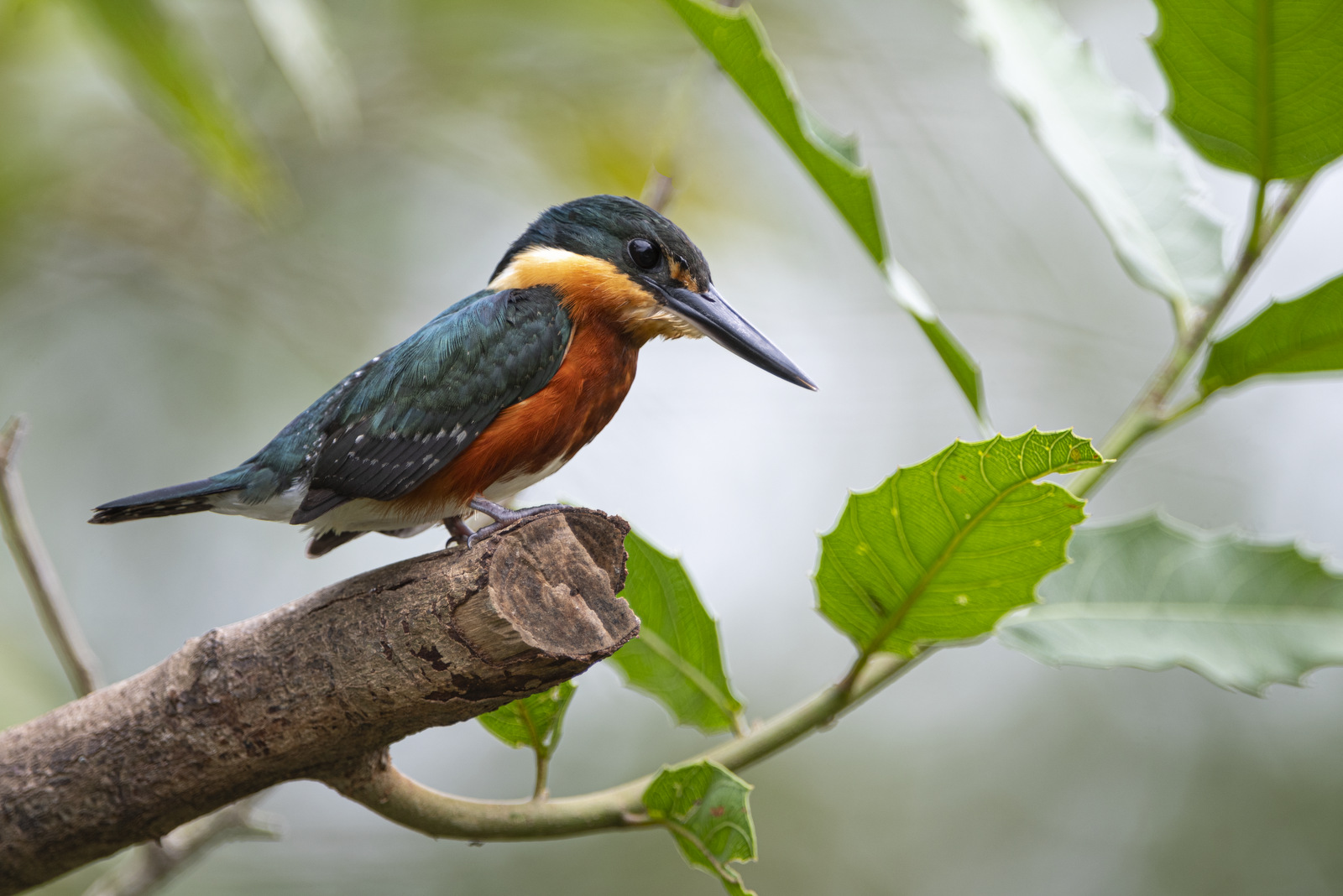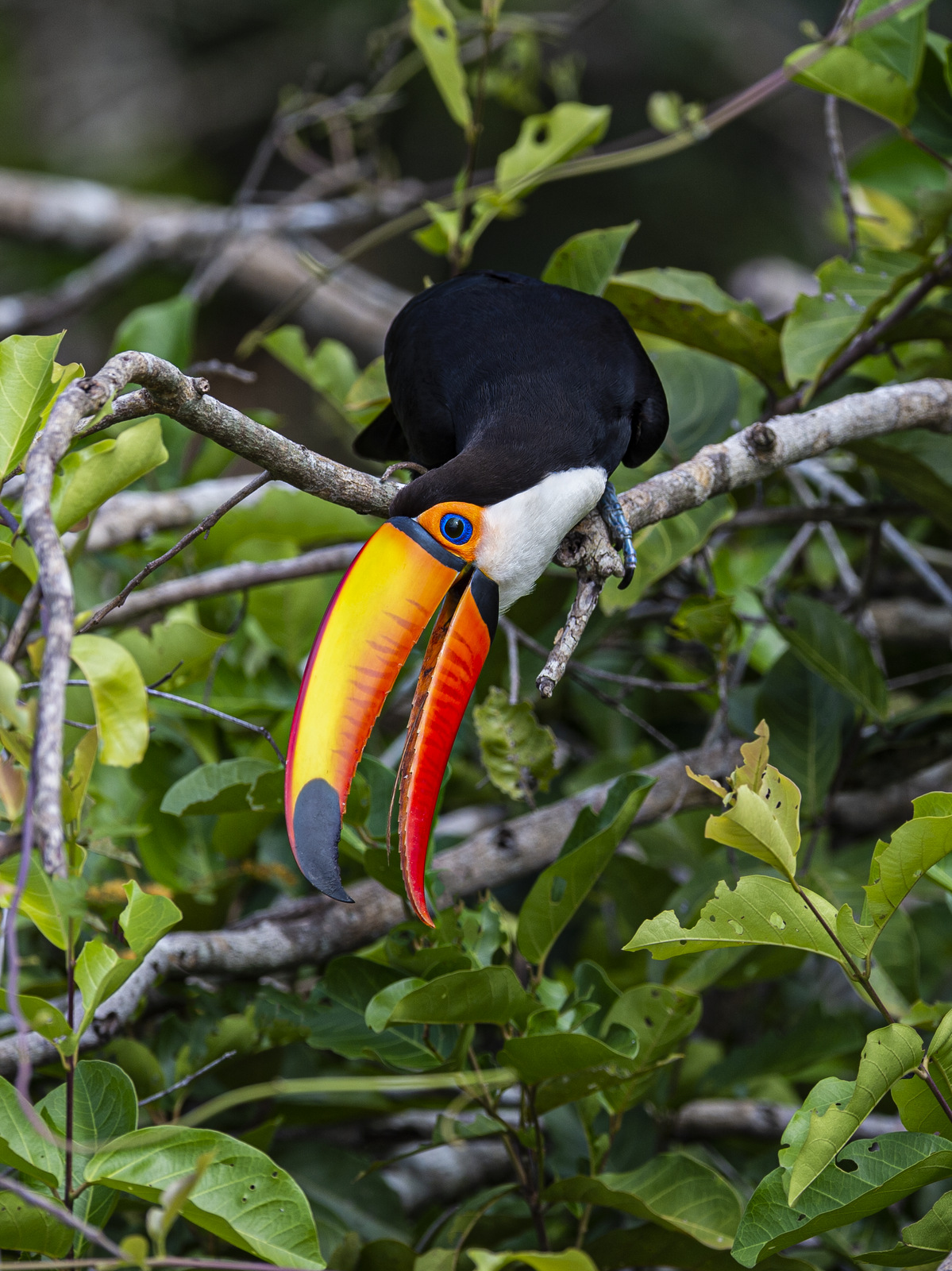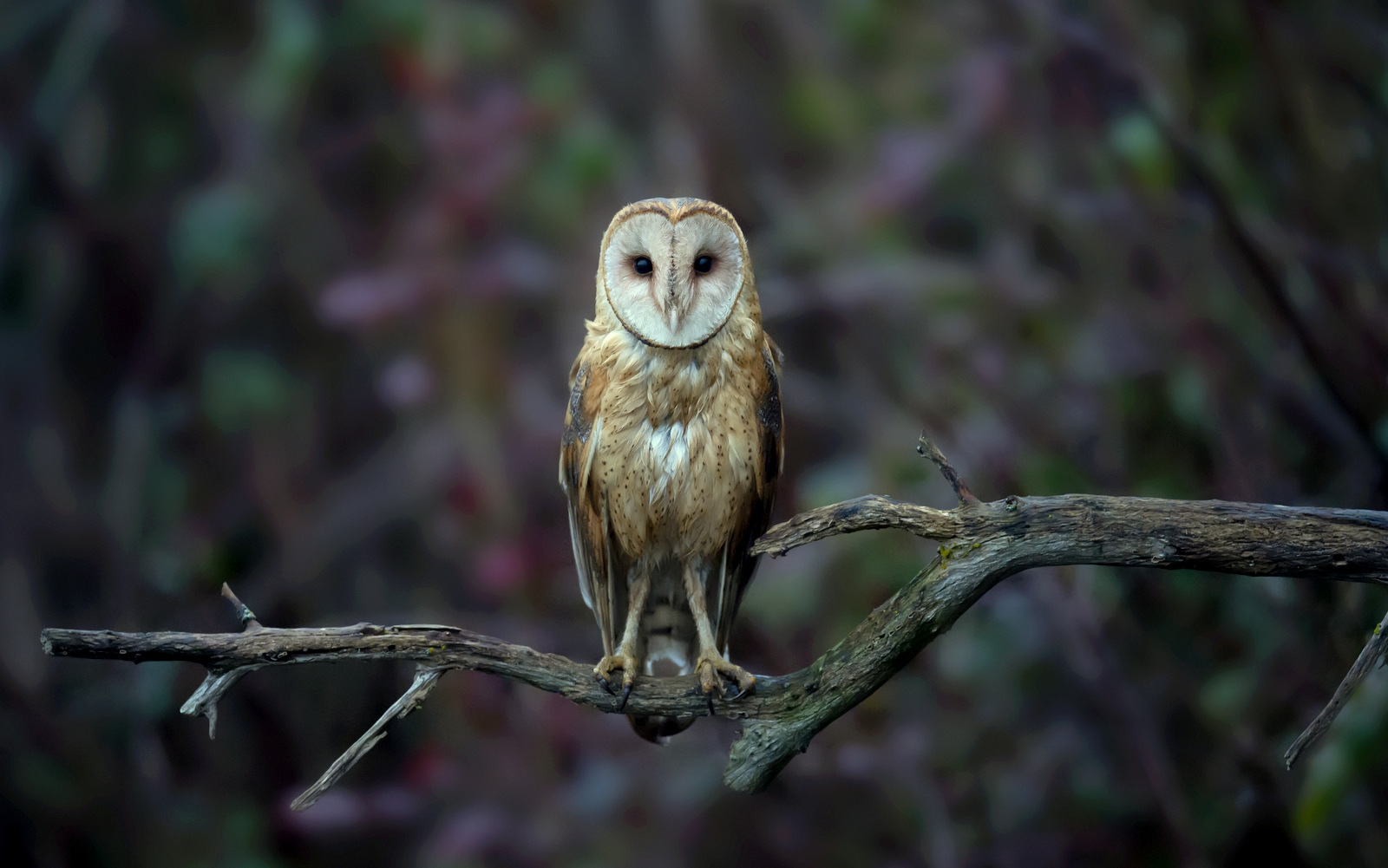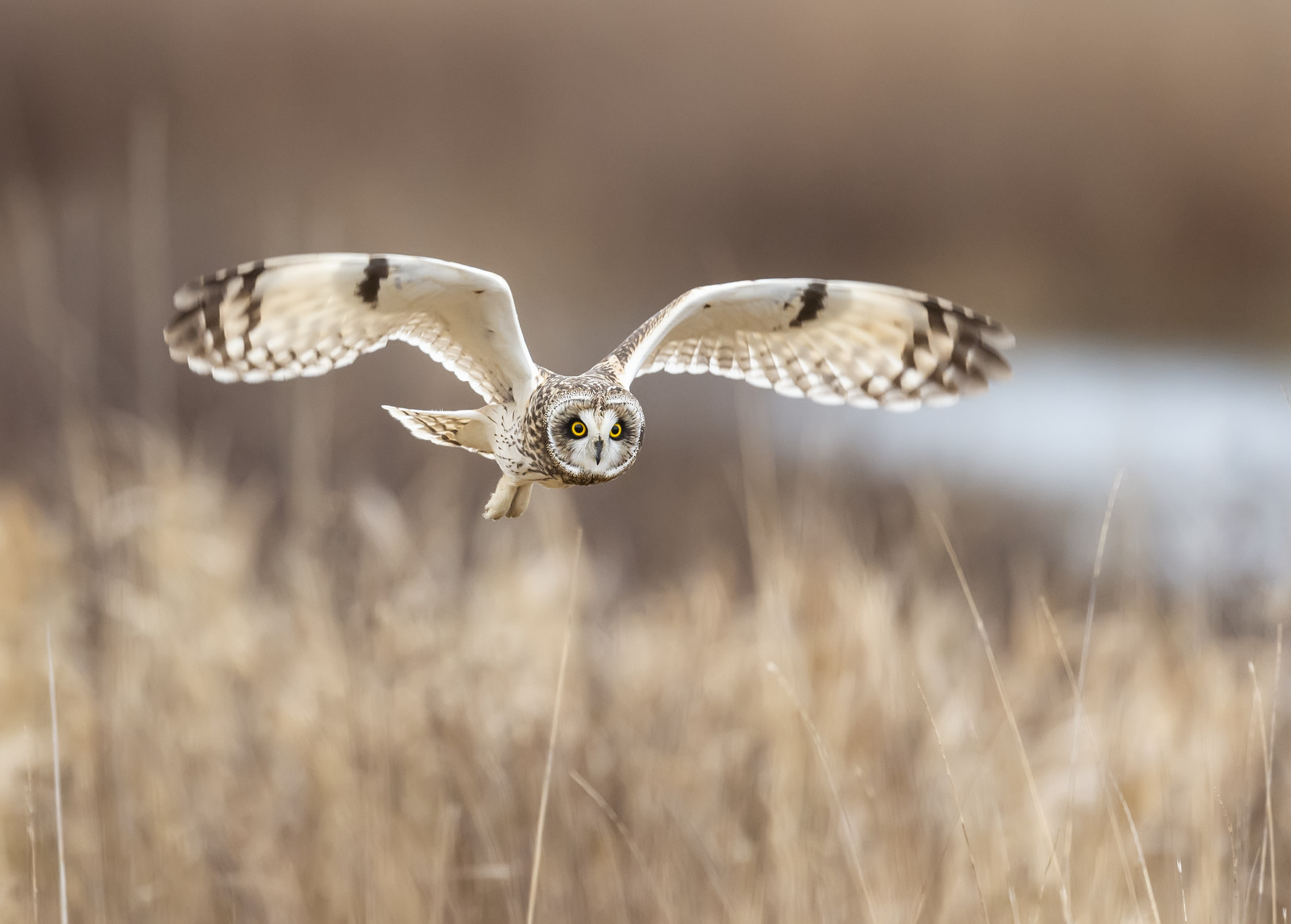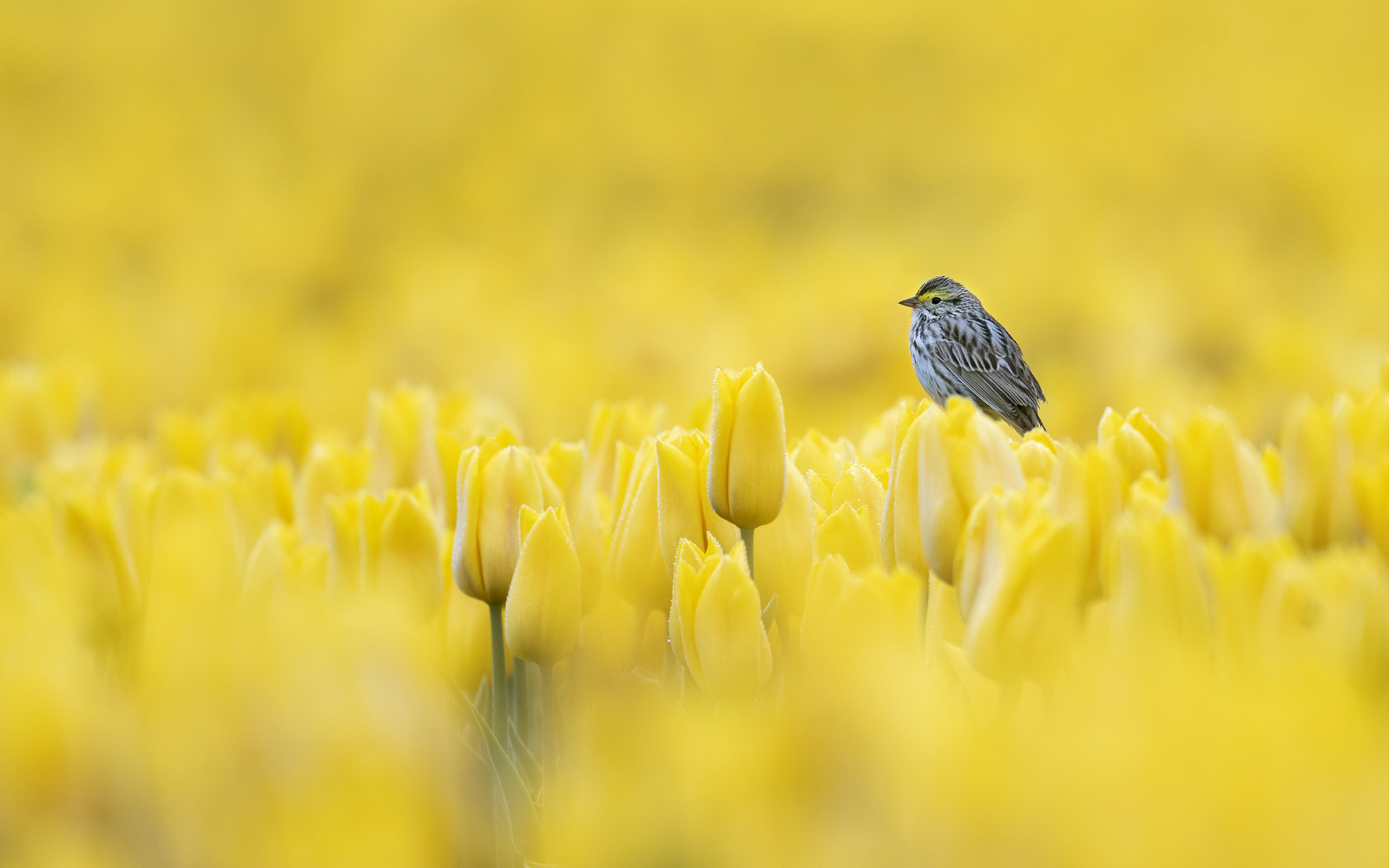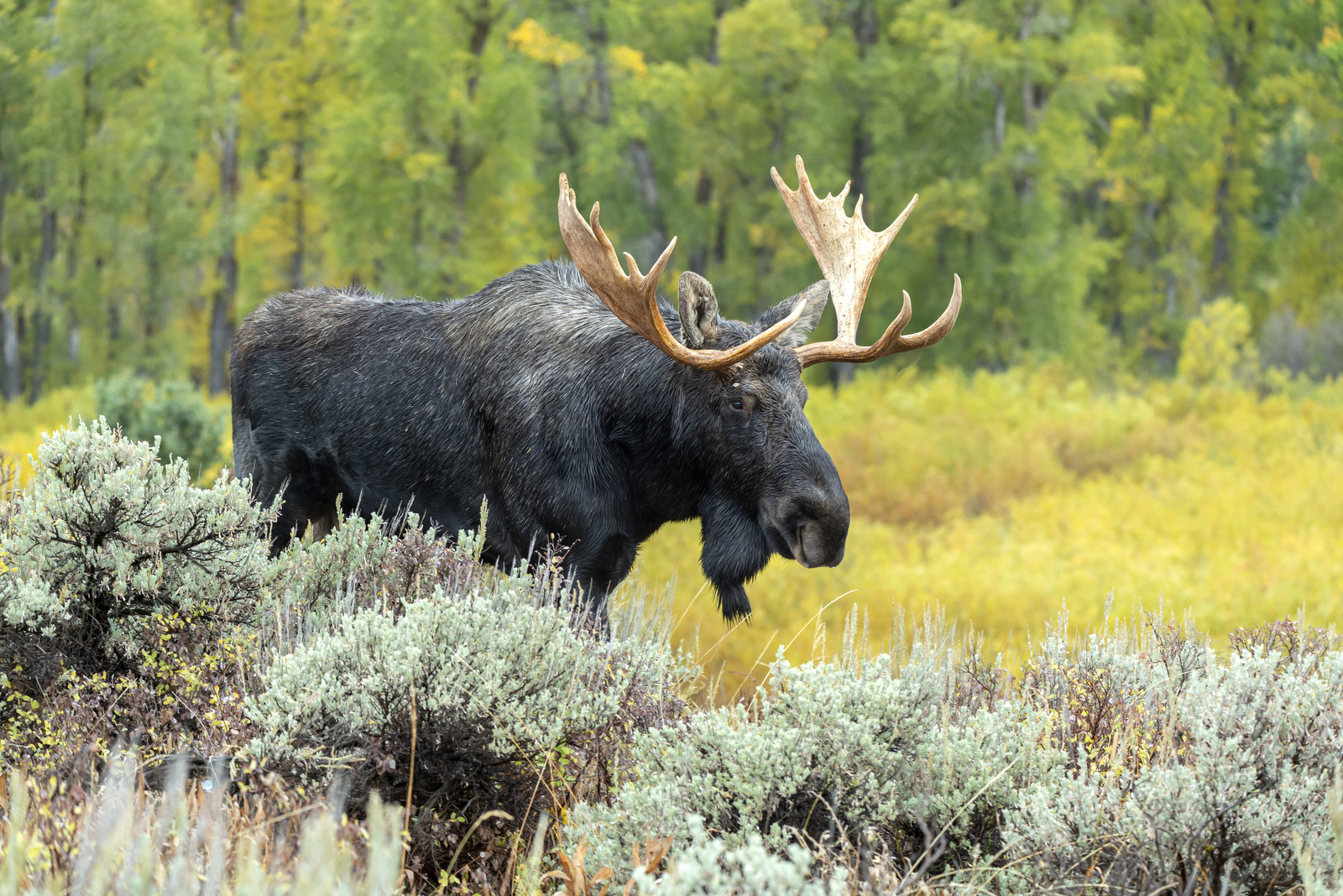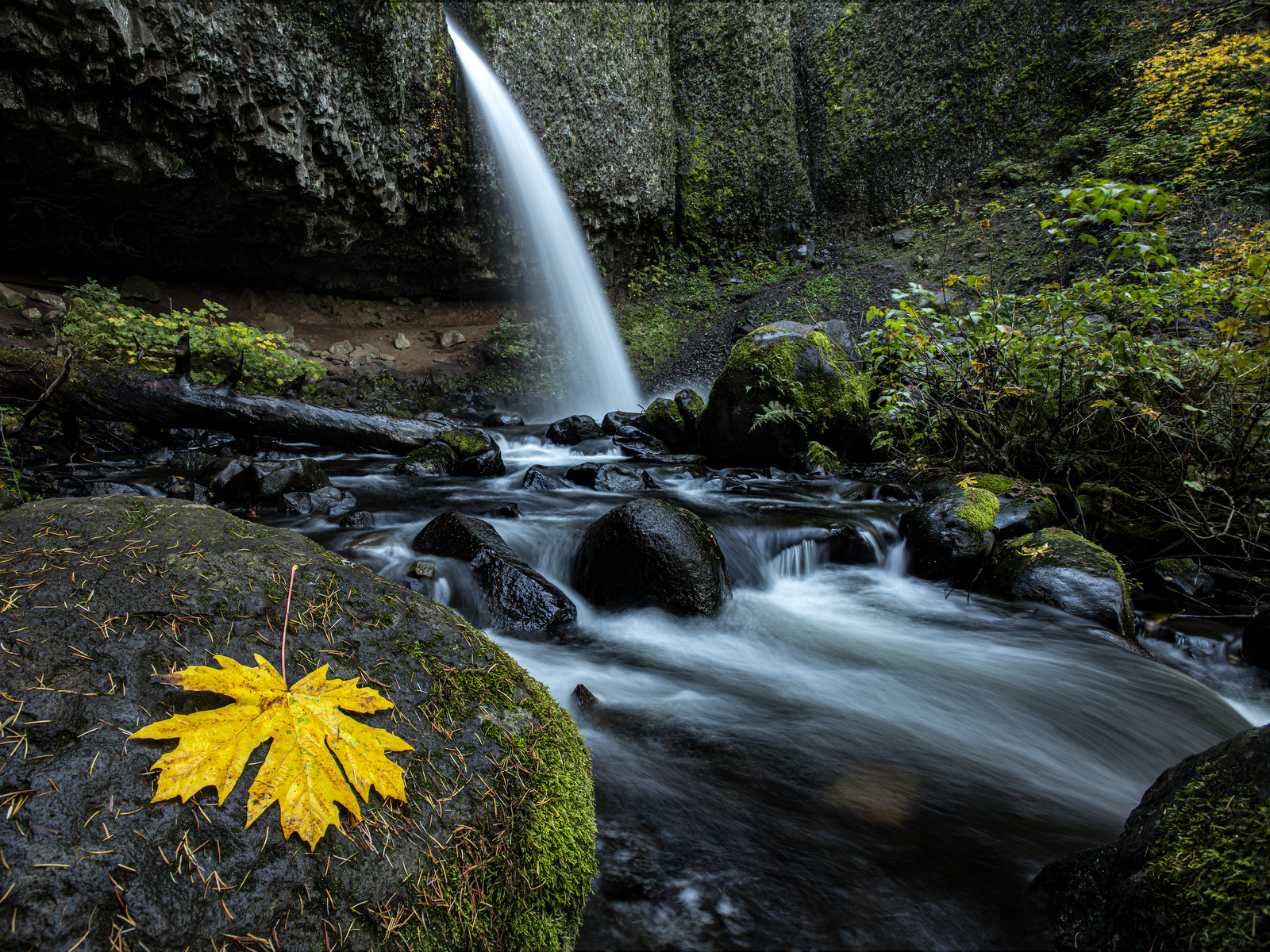30
Shot of the Month – April 2020
Over the years I have seen a fair number of foxes but the sightings were usually brief and never really produced any good images. In 2019 I hit the jackpot as I was able to spend two full days near a fox den. The den was home to two females who were caring for four kits. A “typical” day would have me show up at sunrise (near 6 am) and sit by the den for about 6 hours. Around noon I would head into town for a quick lunch and then back to the site from around 2 pm till after dark (7 pm-ish). The females would leave the kits at the den as they went off to hunt. The mothers were seemingly tireless in their efforts and would come and go throughout the entire day to ensure enough food for the pups. During these periods the kits did little and often just disappeared into the safety underground. After an hour or so, though sometimes after much longer, a female would return with a rabbit, mouse, or vole. At this point, all hell would break loose. The pups would burst out of the den excited at the opportunity to feed. Mom would give the prey to one of the kits who would then run off with their “kill.” The others might chase it to try and steal the meal. Mom would then allow the kits to nurse for a few minutes. After feeding the young’ins would be in high spirits and run around like sugared-up toddlers and engage in all sorts of hi-jinks, roughhousing, assorted shenanigans, and general mischief. This chaos could last for ten to thirty minutes. Mom might leave fairly quickly to head off on the next hunt leaving the kits to their antics. Eventually, the kits would tire out or get bored and head down into the den.
And just like that, poof, an empty field. And then we waited for the return of one of the females with the next meal. So my day was made up of long waits of nothingness and then frantic shooting once the females appeared. As the day drew on the periods of nothingness seemed to get longer and longer. Pick at the grass. Pace around a bit. Lie on your back and look at the sky. Review some images. Pick at the grass…And then boom! Foxes are running everywhere and me trying to figure out which act of this three-ring circus to focus on.
It was a blast.
Here are the two moms – both are red foxes. Check last month’s post to understand how this is possible.
Moms heading off to hunt
Mom’s Back!
And now that we are fat and happy, let the games begin
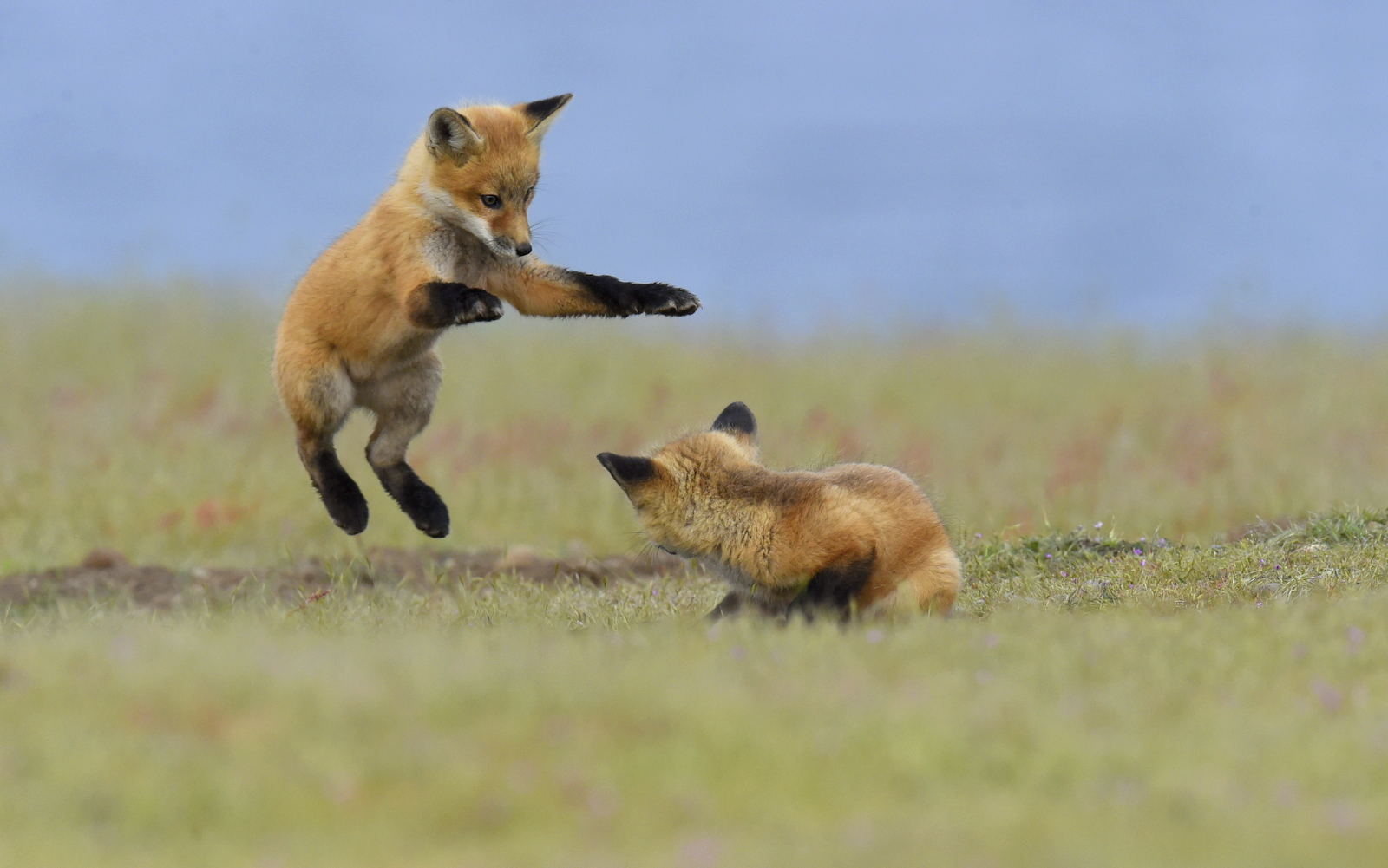
Finally running out of steam
Who knew that kaos could be so kute and kuddly?
And in case you missed it, here is another adorable family moment.
Until next month…..m
Nikon D4S, Nikon 600mm,, 1.4x TC (effective 850mm), f/7.1, 1/1000 sec, ISO 1600

